









By Lauren Pinheiro, Abby Chong and Vaishnavi
Sriadibhatla, Photography Editor and Co-Sports Editors
e sound of the referee’s whistle rings loudly as overtime begins. With the timer counting down from 10 minutes, senior, co-captain and mid elder Shae Wozniak sprints down the eld and receives
the ball from senior and mid elder Hannah Simon. Dribbling past three defenders, Wozniak takes a step into open space before icking the ball toward the cage and past the keeper. e sound of the ball hitting the backboard echoes throughout the eld as Wozniak falls to the ground. e stands erupt into cheers and the scoreboard ashes, marking the girls’ eld hockey team as the winners of the PIAA 3A State Championships for the rst time in Conestoga’s history. “I collapsed on the ground and immediately burst into tears
because I couldn’t even believe it happened,” Wozniak said. “I felt my teammates on the eld rst come around me. ey were like, ‘We won, we won, we won. Oh my gosh, oh my gosh.’ I saw them sprinting out, and (they) just piled on top of me.”
On Nov. 16, the team played in the state championship game for its rst time since 1987, facing Villa Maria Academy High School.
Shortly into the quarter, junior and forward Alivia rst D’Ascanio scored a goal, securing an early lead for Conestoga and allowing the girls to focus on defense. Go-
ing into hal ime, they maintained their 1-0 lead until Villa Maria battled back in the third quarter, tying the score 1-1. A er neither team scored in the fourth quarter, the game went into overtime.
“It was really high energy. It was only like a minute and a half of overtime,” sophomore and defender Lucy Salata said. “Once Shae got the ball and started carrying it down, we all knew that she was gonna do it. Some girls even took their coats o when she was carrying the ball to the goal.”
Having been on the team for three years, senior, co-captain and
defender Phoebe Ridder said that the team’s work ethic and camaraderie were key to winning the championship this year. A er the nal goal from Wozniak, Ridder felt proud of the team and joined the other players on the eld to celebrate with a group hug.
“I just had such a rush of emotions — it was crazy. Everyone was crying. I almost don’t even know how to describe it, but you can see the pictures and in the video, so much love for each other,” Ridder said. “It was such a team effort. It wasn’t one player.”
head coach Regan
has been
part of the
since
initially serving as an assistant coach before stepping into her current role in 2019. Marscher has watched the team improve and was glad that it faced Villa Maria in the state championship, as the girls previously lost to the school during the District 1 Championship game this year.
“Winning the state championship has to be the best moment. e rst one in our program’s history is incredible. We really fought super hard against a tough Villa
Scan the QR code to watch an accompanying package

On Nov. 21, the U.S. Department of Education released the 2025-26 Free Application for Federal Student Aid (FAFSA) nearly two months later than the historical release date of Oct. 1 and 10 days earlier than its predicted 2024 rollout date of Dec. 1. Last year, major changes to the FAFSA’s formatting and nancial aid formula resulted in an approximately three-month delay and widespread glitches. is year, the department beta-tested the form from October to November to prevent issues, slowly allowing select students to ll out the application before making it fully available on Nov. 18 and o cially releasing it on Nov. 21. Guidance counselor Rachel Reavy helped students who experienced glitches with the 2024-25 FAFSA and said that this year, the department prepared in advance to manage any potential issues.
“We’ve met as a department. Several of us have gone to different trainings to hear about the rollout and hear what’s new. We’re just really hoping that things are going to be as (the Department of Education) claim this year,” Reavy said. “We will be here to support everybody and help make phone calls and get in touch with colleges if we need to. It’s not ideal — because it’s your financial business, not ours, we can’t really ask a lot of questions. But we’re here
to help support your family through the process.” Last admission cycle, some schools pushed back their decision days — the deadline by which students have to
commit to a school — to accommodate the delays with financial packages caused by the late FAFSA release. Reavy hopes that this year’s delay will not cause similar issues.
“ e delay in (the 2024-25 FAFSA) rolling out, and then the glitches that it had, meant that people didn’t get theirnancial packages from schools in a timely manner, which then
pushed back when people were making decisions,” Reavy said.
“ at became really stressful for a lot of families.” Senior Shruti Satheesh, who applied early decision before
the Nov. 21 rollout, said that the form releasing on Oct. 1 would have helped her make a more informed nancial decision.
“I feel like it’s just a disappointment,” Satheesh said. “I

feel like it’ll (have) given me a closer direction, a clear direction of where I might be able to go based off tuition.” Senior Amber Bowden experienced some issues with information being updated across parent and student Federal Student Aid accounts but was able to successfully fill out the 2025-26 FAFSA form in early December.
“Whenever my parents would file something, it would say that it wasn’t filed correctly, and they had to redo it to match mine. But sometimes it wouldn’t match, and it’ll be like, ‘Oh, it’s not matching, so you have to redo it.’ So we had to redo it a couple of times,” Bowden said. “It was very hard, very frustrating, because it was very long on the parents’ part.”
This year, Reavy said she is not aware of any students having glitches with the FAFSA so far, though it may be too early to tell.
“There haven’t been any issues that I have been made aware of yet. I feel like FAFSA rolled out earlier than they were estimating, which people were pleasantly surprised with, and I haven’t had anybody coming to me with glitches yet. That either means people haven’t submitted their FAFSA yet, or the glitches haven’t come to light yet,” Reavy said. “Hopefully the delay this year is to prevent that from happening. I’m hopeful that they’re accurate in that. I’m going to stay optimistic.”
THE LATEST DEVELOPMENTS
IN T/E AND NATIONAL NEWS
Conestoga reaChes end of PIaa ProbatIon
Conestoga is officially off probation with the start of the winter athletic season, as the Pennsylvania Interscholastic Athletic Association (PIAA) originally declared probation for three athletic seasons after the Nov. 17 PIAA 4A Boys Soccer Championship game in 2023. During probation, further fan or team misconduct could have resulted in Conestoga’s disqualification from postseason championships.
tredyffrIn townshIP
Creates arts CommIssIon
On Dec. 2, the Tredyffrin Township started its first arts commission, with help from supervisors Matt Holt and Carlotta Johnston-Pugh. Township officials are looking to recruit five members from the community, requiring them to submit a resume and letter of interest. The group’s goal is to support arts in the area.
s us PeCt of u n I ted -
h ealth Care C eo found
On Dec. 9, police arrested Lu-
igi Mangione, originally on firearms charges, in Altoona, Pa. New York City prosecutors suspect Mangione to have shot and killed the CEO of UnitedHealthcare Brian Thompson in Manhattan, New York on Dec. 4. Magione currently faces charges of murder, among ones related to firearm, forged instrument, false identification and weapon possession.
County aPProves uPdated PublIC transPort Plan
The Chester County Commissioners passed an adjusted version of the 2014 public transportation plan on Nov. 20. Changes include suggestions grouped into three categories: system, environment and experience. They address possible expansions for passenger rail and bus service.
On Oct. 22, the Pennsylvania House of Representatives passed House Resolution 318 152-50, which calls for a study of the Pennsylvania Interscholastic Athletic Association (PIAA). The PIAA is a nonprofit corporation that develops and enforces rules in interscholastic athletic competitions for more than 1,400 schools across Pennsylvania. Democratic vice chair of the Pa. Athletic Oversight Committee Rep. Robert Matzie proposed the resolution in early January. “I have heard deep concerns over the policies, procedures, and decision making of the PIAA. Concerns from parents, teachers, athletic directors, principals, superintendents, and House and Senate members alike,” Matzie wrote in a Jan. 24 memorandum. “The authority of the PA Athletic Oversight Committee is limited. Attempts to have these concerns addressed by PIAA leadership too often go unresolved if they are considered at all. In this light, I believe it is time
to take a deliberate and considered approach in conducting a comprehensive study of the PIAA.”
The resolution authorizes the Legislative Budget and Finance Committee (LBFC), a Pa. General Assembly joint committee, to examine, review and suggest changes for the PIAA in a study due in six months. It is investigating aspects of the organization including financial performance, broadcast agreements, name, image and likeness policy, competition classification formula, location of state championships, and the potential expansion and enhancement of the authority of the Pennsylvania Athletic Oversight Committee. Field hockey head coach Regan Marscher approves of parts of the new resolution, especially regarding the locations of state championships and playoff games.
“We have competed in the state tournament in very nice stadiums, but the fields are built for football, and that is not appropriate for field hockey play. Even at the state championship, the turf was made for football, and the

ball for field hockey moved incredibly slow,” Marscher said. “We’ve also played at Exeter Township High School in Reading the last four years for the state quarterfinals, and that field is not great for field hockey.”
Girls basketball head coach AJ Thompson feels that the PIAA should also make

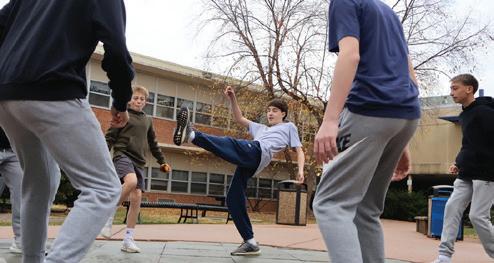

On Nov. 22, Longwood Gardens unveiled “Longwood Reimagined: A New Garden Experience,” a remodeling of 17 acres of the site’s conservatories and grounds. It announced the project in 2021, and the gardens remained open throughout the process of constructing new buildings and expanding the indoor and outdoor gardens. Longwood Reimagined opened to the
public with the start of the annual “A Longwood Christmas,” featuring illuminated outdoor gardens, fountain shows and other holiday-themed displays.
“The unveiling of Longwood Reimagined marks not only a milestone for Longwood Gardens but also a bold leap into the future of defining what it means to be a great garden of the world whose foundation is based upon horticultural excellence,” Longwood Gardens CEO and president Paul Redman said

in an Oct. 23 press release. “This project honors our legacy by embracing innovations and sustainability practices that define 21st century garden artistry.”
The largest piece of the project is the West Conservatory, a new 32,000-square-foot greenhouse that incorporates sustainable technologies and draws inspiration from the Mediterranean for the interior gardens. Longwood Reimagined also saw the relocation and reconstruction of the Cascade Gardens, establishment of a new outdoor Bonsai Courtyard and restoration of aspects of the Waterlily Court, which will open in the spring.
Leading up to the project’s public launch, The Kennett Collection, the largest private collection of bonsai and bonsai-related objects outside Asia, gave 50 bonsai to Longwood Gardens for viewing. Longwood Gardens also relocated its restaurant and unveiled new private event spaces and The Grove, a learning and discovery center.
Junior Elaine Liu visits the gardens every year with her family for “A Longwood Christmas.”
“I thought (the West Conservatory) was really nice. It had a lot of good lighting, and I thought it was decorated well. The trees were pretty,” Liu said. “I wish I went a bit later so I could see all the lights better, but I would say (the gardens) are definitely improved.”
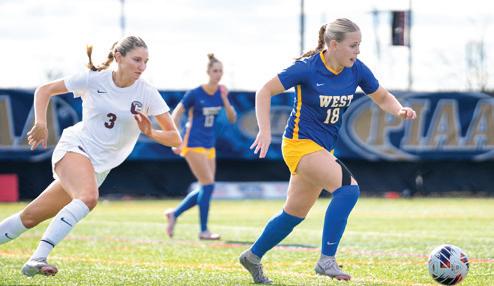

games easier to watch for remote fans. Currently, the PIAA broadcasts select games or media for free through the Pennsylvania Cable Network (PCN), but the majority of playoff games require a paid PCN subscription to view.
“I think being able to broadcast or stream our playoff games through our own
YouTube channel would be
something that is a common sense kind of thing, where people who can’t make it to the game but want to watch their granddaughter or grandson play don’t have to pay to have a subscription to something in order to be able to watch it,” Thompson said. “I get the PIAA has to
make money somehow, but they make money in plenty of other ways. Limiting who can watch the game doesn’t make sense to me.”
Another element that the committee is investigating is the competition classification formula, the PIAA’s method for determining what schools can compete with each other. Currently, public schools, called boundary schools, must recruit players living inside school district lines, but private and charter schools, called non-boundary schools, can recruit players outside of district lines. Under the current competition classification formula, some boundary and non-boundary schools can play against each other.
“There’s things that the PIAA does really well, and there’s things that a lot of coaches would like to see them work on a little,” Thompson said. “I don’t think the boundary, non-boundary schools thing is ever really going to get fixed. But I think there’s small things that the PIAA could do, like letting us stream playoff games so that everybody can watch as a step in the right direction.”
At the Oct. 7 Tredyffrin Township board of supervisors meeting, assistant township manager and finance director Joseph DiRocco presented a draft master plan to the board of supervisors outlining proposed renovations to Friendship Park in Paoli. Aimed at improving the park’s accessibility and utility for the community, the plan has been in development since April through a collaboration between Parks and Recreation board members, township staff and consultants from Simone Collins Landscape Architecture.
“This started last year in conversations with the parks board about specifically Friendship Park and how it’s more or less an underused park we currently have,” DiRocco said at the Oct. 9 meeting. “We started discussing things that we can do. The best way to deal with this is a master plan.”
A key focus is ensuring the park meets Americans with Disabilities Act (ADA) standards,
which includes equal access to public spaces, buildings and services for people with disabilities, such as smooth, wide paths and ground-level play elements. According to Simone Collins consultants, the park currently struggles with old and uneven pathways, limited ADA-compliant parking, inaccessible benches and outdated playground equipment. Junior Celeste Russo, a regular visitor to the park and a wheelchair basketball player, welcomes the changes.
“I think the thing that needs to be focused on the most for renovations is smooth pathways,” Russo said. “I’m able to get to the park just fine because of how often I go, but the paths are not smooth and not made for wheelchair users.”
Other key aspects of the renovation include the addition of a pavilion featuring two new restrooms with a small storage area, an additional playground and nearby picnic spaces with ADA-compliant pathways to ensure wider access to the tables.
“I would love to see how we can make the children’s playground more accessible for disabled kids
who want to use the play space,” Russo said. “We should try to make our park safer for people with wheelchairs or mobility aids.”
The plan also calls for accessible paths to picnic spaces, a fenced-in dog area, upgraded basketball courts with new backboards and nets, and measures to address environmental issues using sustainable materials and eco-friendly practices. The board hopes to complete the project in phases, with the first phase focused on parking and pathway improvements, followed by playground renovations and a new pavilion. Township officials estimate the project will cost around $1.8 million over a span of three to five years. The renovations are especially important to Russo, who highlighted how Friendship Park’s atmosphere contributes to a sense of community.
“I love Friendship Park’s atmosphere,” Russo said. “What I love about it is that you feel connected to your community. It’s a diverse space where I see all sorts of different people.”
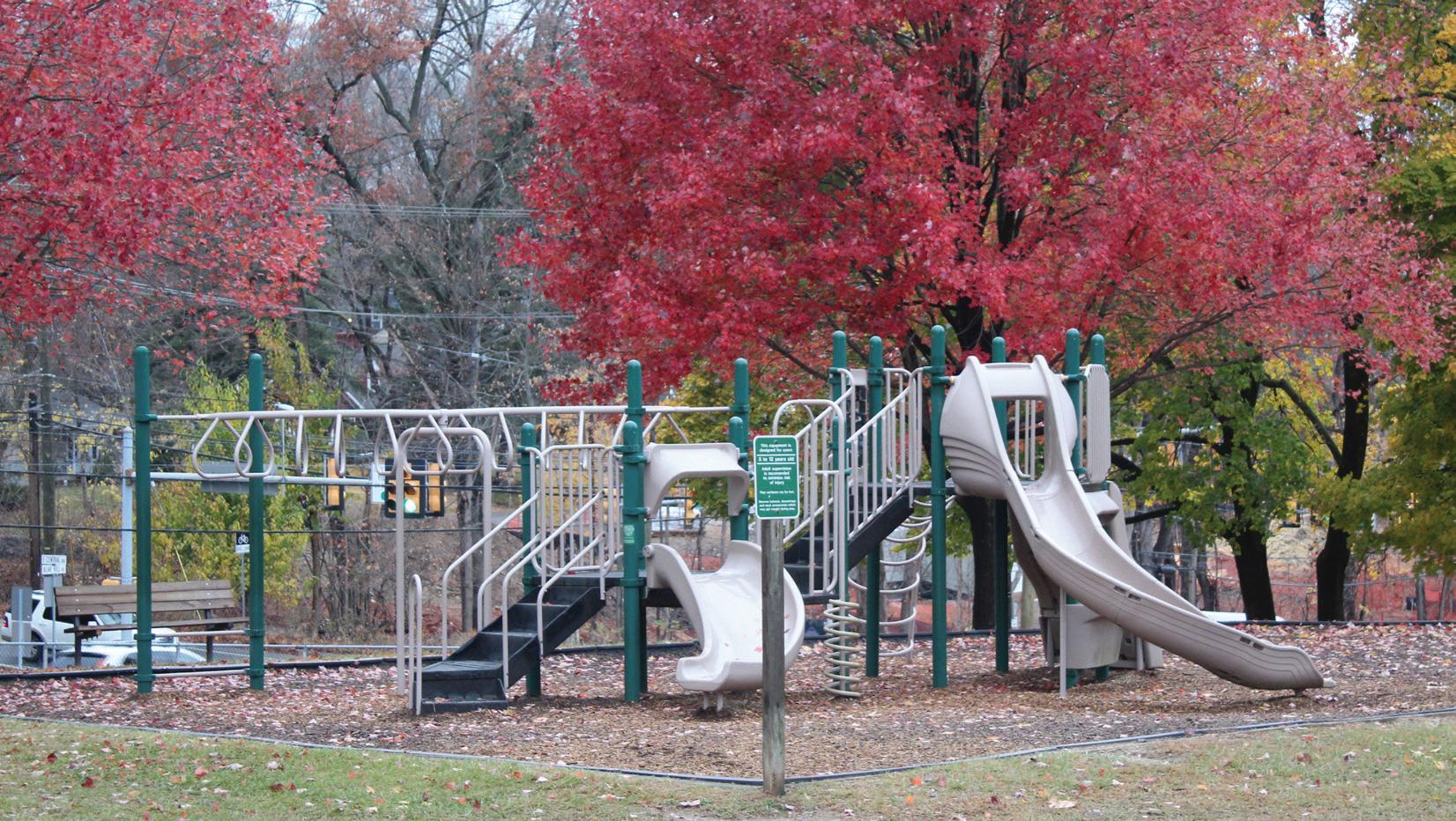
On Oct. 21, the Tredyffrin Township and Easttown Township boards of supervisors ap-
pointed Joe O’Leary to the new position of Fire Administrator.
As Fire Administrator, O’Leary, who is also EMS captain at the Concordville Fire & Protective Association, works
to ensure that Tredyffrin and Easttown fire departments receive enough funds from the townships and that they use the funds effectively. He also advises and facilitates commu-
nication between the townships and the fire departments, and he makes logistical standardizations to increase efficiency.
“He’ll coordinate budgets, coordinate activities, advise the

township on matters of fire and EMS,” Easttown Township Manager Don Curley said. “The goal is to make sure that the township assets are used effectively and efficiently and to ensure that we have the highest-quality fire (and) EMS service.”
O’Leary and Tredyffrin
Township Manager Bill Martin said that the number of volunteers at T/E fire departments has decreased in the last few years, resulting in staffing shortages that led to the creation of the Fire Administrator position. O’Leary addresses the staffing issue and supports the departments financially by working with the fire chiefs to determine their needs and goals and developing plans to present to the townships and departments when needed.
“They’ve (the townships have) been contributing more and more money to the operation of the fire service and EMS delivery, but they really haven’t done a deep dive into, number one, how the money is being spent,” O’Leary said. “I think they’ve recognized that, and they’ve gotten ahead of the game to say, ‘Hey, we really need to give the fire company some support to be successful.’ And that’s where I come in.”
Instead of every fire department operating independently, O’Leary has the ability to allocate resources to help the departments collaborate. For example, Paoli Fire Company has the only fire truck ladder in Tredyffrin and Easttown Townships. As Fire Administrator, O’Leary can temporarily assign the ladder to any fire department that needs to use it. In the long term, O’Leary hopes to expand the Fire Administrator’s reach beyond Tredyffrin and Easttown Townships by working with mutual aid organizations, which are based outside the two townships but assist with large-scale incidents. “The extent of working together is infinite. We’re going to have the companies that primarily cover this area working together, but we also have mutual aid companies like East Whiteland, Malvern, Upper Merion, Radnor Township, Newtown Square Fire Company,” O’Leary said. “The opportunities are endless.”
Continued from page 1.
Team wins game 2-1, overcomes previous losses
Leading up to the game, the team prepared mentally and physically. e girls hosted a dance party and played music on the bus ride to the championship, listened to pep talks and warmed up to play on the eld.
“Our coach came in and gave us an amazing speech, a moment that I will remember forever and almost brought me to tears before the game even started,” Wozniak said. “What I remember she speci cally said was, ‘From great opportunities arise great movements.’ I think realizing that we are at a state championship, one of the top two teams in the state of Pennsylvania, and that we belong here was just so motivating.”
e team losing to Villa Maria in the district game motivated the girls to win as they faced the school again in the state
championship. Marscher felt that D’Ascanio scoring the rst goal around seven minutes into the game helped instill condence in the team.
“We scored first relatively quickly into the game. I think it was really important for us to set the tone for Villa that we weren’t messing around. Villa is a very strong team offensively, (but) our defense just completely shut them down,” Marscher said. “Watching Villa get frustrated was kind of cool, and seeing how patient and composed our players were was really awesome.”
e team developed a “manto-man” marking strategy for the state championships a er playing Villa Maria in the district championship, in which senior and mid elder Lexi Patterson face guarded junior Caitlin Connell from Villa Maria to prevent her from getting close to the ball. Sophomore and defender Lucy Salata attributes the team’s success to the tactic.

were some
al
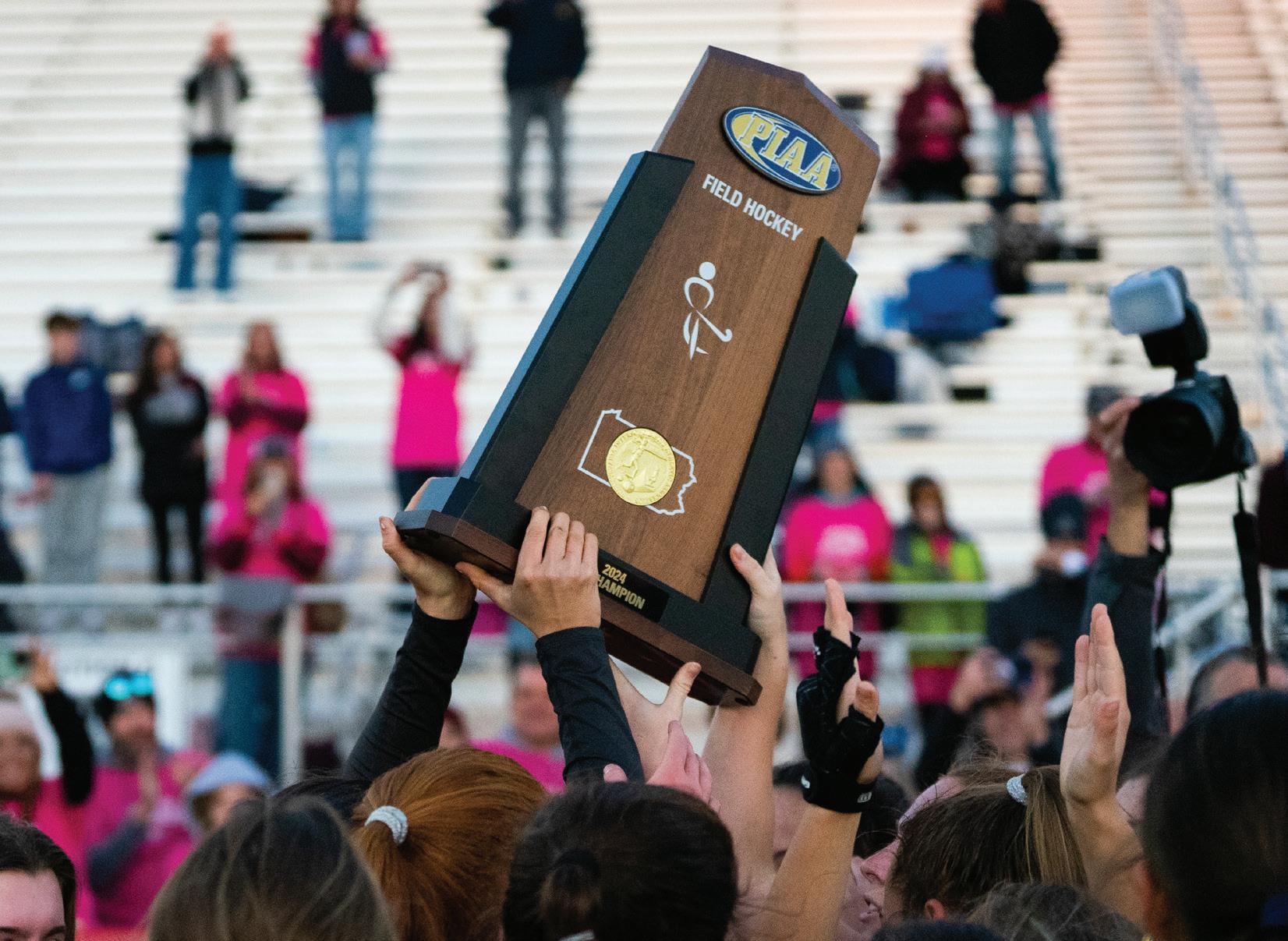
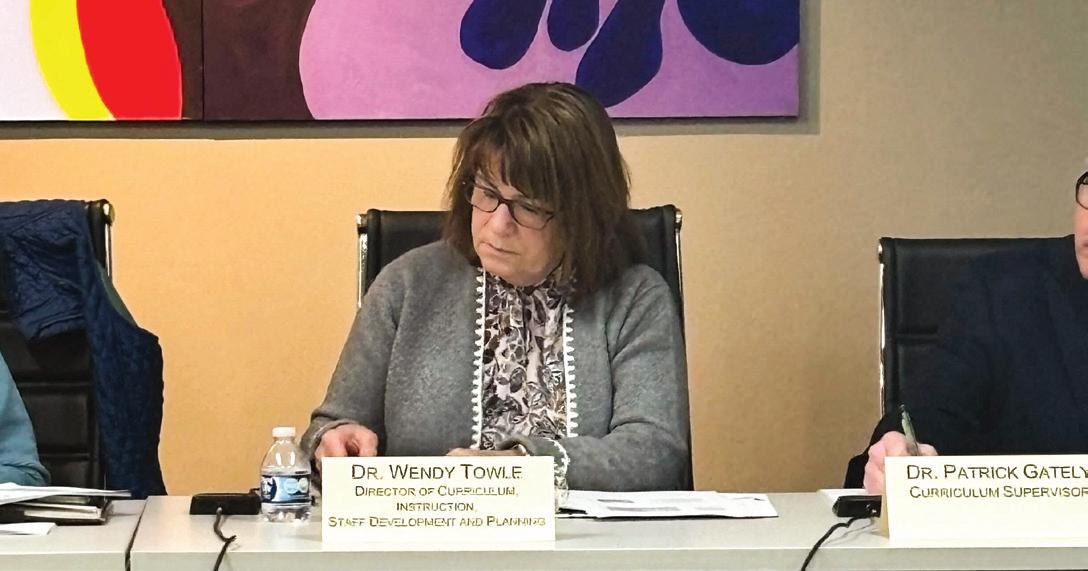
August Zangrilli/The SPOKE
committee meeting.
Rajan Saha and Vivaan Krishna Ponugoti Sta Reporters
TESD implemented flexible instructional days (FIDs) during distance learning to allow teachers to teach virtually. After the return of in-school learning, the district has been using one snow day before transitioning to five FIDs every school year for emergency closures. Starting next year, the district plans to use FIDs before any snow days. At the Sept. 12 education board meeting, committee members discussed making the changes and asked Dr. Wendy Towle, director of curriculum, instruction, sta development and planning, to dra the 2025-26 school calendar. e school board unanimously passed them at its regular Oct. 28 meeting.
“The main benefits (of FIDs) are that instruction can continue even if students and faculty can’t get to the schools because of weather, and we don’t have to add days at the end of the year,” Towle said.
French teacher William Rivé supports the district’s decision since fewer to no extra days would be added to the school year.
“It was nice when it was still snowing, but I also understand why we have implemented (FIDs). I do like this idea that if it were to snow for several days throughout the year, we wouldn’t be here until the end of June,” Rivé said. Senior Mike Dora also supports prioritizing FIDs over snow days, since it would keep more summer days in the calendar.
“In terms of finishing school early, (using the FIDs first) is a smart move because snow days add to school days at the end of the year,” Dora said. “It’s a good thing they’re doing this because students won’t have to stay in school longer and cut into their summer break.”
Towle hopes that families understand and support why the school board decided to make these changes.
“One of the reasons I believe the board decided to put exible instructional days rst was to bene t students and families,” Towle said. “It’s a positive impact that families can hopefully see that we’re gonna have to have six days o of in-school instruction before having to worry about possibly changing any summer plans for the next week.”
it would give the whole team momentum forward,” Salata said. “We would have some really good offensive opportunities, and once we had a few of those good offensive opportunities, I knew we had the game in control.” e girls utilized a “low press” strategy, a defensive method in which the team allowed Villa Maria to play, focused on counterattacks and used the sides instead of the middle of the eld. When shooting the nal goal, Wozniak felt that the game was neck-to-neck and was not certain that the ball went through the cage at rst.
“I knew Hannah or someone would get the ball down there to me. She just sent it to space. I ran onto it. I got through two defenders. There was a third
defender that I just touched the ball out,” Wozniak said. “Kind of on my back foot with the ball going right to me, I tried to get the shot off, and then it went right inside the goalkeepers’ pad, into the back of the cage.”
As the team made its way back to Conestoga, a re truck from the Berwyn Fire Company temporarily accompanied the girls and a crowd of supporters met them at the school. e team celebrated its championship win and newfound state title with an a er-party at a player’s house.
“It was the best feeling ever. Everyone was just so excited, sprinting on the field,” forward and freshman Price Orcutt said. “On the bus, we all had a dance party.”
e season also marked the rst time since 1987 that the team quali ed for the state championship. Marscher invited alumni players from the original team, such as 1989 alumna Nikki Walton, to visit the girls during their Nov. 15 practice. Walton was happy to see the team return to the state championship level a er 37 years.
“We went to practice and just talked to them for a minute. I just thought that was great that (Marscher) included us in the success of the team now,” Walton said. “To see them actually win it is great, just for the school and because it’s been a long time since they went.”
Girls train, build community throughout season
e team started training for the season over the summer with the aim of creating a connected team environment. Forward and freshman Reagan Herrell was originally nervous to join as a new player and had concerns about the team making up for the senior players that graduated last year.
“It was kind of hard in the beginning because a lot of the

seniors graduated who were really good last year, and we were trying to figure out where everyone worked best together,” Herrell said. “But as the season went on, we started to figure out the people and how they position themselves on the field so we could pass and connect with them.”
Last year the team had an undefeated season until the playo s. As a result, Salata felt that the girls did not share the team-building experience of losing a game and overcoming it. is year, she said that their bonds have strengthened as they encountered losses as a team.
“At ’Stoga eld hockey, we really try to practice the way that we want to play. Our practices are taken very seriously. e girls work really hard,” Marscher said. “I call it ipping a switch. It’s obviously really fun to hang out with your teammates once you get to practice, but there’s work that needs to be done. e players, especially the seniors on the team, know what I expect as their coach and
Celebrating with a team was one of the greatest things I’ve ever experienced. That day was the best day of my life.
“Having some early losses in the season really connected us and showed us that we don’t like to lose,” Salata said. “It brought us together that we have a common goal: ‘Obviously we want to win, but we know how bad it is to lose, so let’s not make it happen.’” roughout the regular season, the team practiced every day a er school for around two hours.
During the playo season, they started having more team morning walks. Marscher said that the team strived to uphold a hard-working but enjoyable environment.
Phoebe Ridder Senior, co-captain and defender
know what the program needs to be successful.”
In order to cultivate a strong bond among players, the captains prioritized hosting a wide variety of team-building activities throughout the season. e team kicked o its summer training by hosting an Olympics-style tournament among its players. e girls hosted other events, such as a haunted house visit, pasta parties, team yoga sessions, dance parties, community service activities and player-led youth clinics.
“One of our biggest goals was connection and making sure that everyone felt welcomed. It’s hard to have a group of 30 people and for everyone to be best friends, but I think that everyone had a lot of respect for each other,” Ridder said. “Celebrating with a team was one of the greatest things I’ve ever experienced. That day was the best day of my life.” e team ended the regular season with an overall record of 15-1 and is 24th in the nation, according to MaxPreps. In the future, Marscher wants to maintain the same approach the coaches and team had this year.
“Every year is a different cast of characters, but it is one of the beauties of a new season. It can be overwhelming at the beginning, thinking about players who have gone on and graduated, but it truly is like that every year and every season,” Marscher said. “It’s trusting the process, and it truly is team-building. I’m really excited we have a lot of very strong girls coming back next year, so I think we’re gonna do very well again.”



Intricate carvings depicting deities cover the walls of the Hindu temple BAPS Swaminarayan Akshardham. Asian American Studies students admired the beauty of the elaborate designs as they walked through the halls.
Led by Stephanie Matula, Asian American Studies is a new semester-long course this year. On Nov. 13, the Asian American Studies class went on their second eld trip of the semester to the largest Hindu temple in the U.S. Located in Robbinsville, New Jersey, the temple stands as a landmark of Hindu culture and architecture.
As students learn about Asian history and culture in class, the goal of the field trip was to educate the students
on Indian history and Hinduism. Senior Cindy Wang describes her initial reaction to seeing the temple.
“Stepping into the main temple for the first time, it was genuinely breathtaking. There was so much care put into the carvings and the construction, and it all really showed throughout the entire experience,” Wang said. BAPS Swaminarayan Akshardham opened in 2023 and is the largest Hindu temple outside of Asia, occupying 185 acres and standing at 191 feet tall. Students spent the morning at the temple and witnessed the unique architecture and design. Senior Tabitha Zimmerman admires the careful craftsmanship throughout the temple.
“So much of the architecture told stories on its own,”
Zimmerman said. “Sometimes there would be deities carved, and sometimes there would be two people interacting. There were a lot of elephants and peacocks everywhere. I found it fun to analyze each part of the temple that I saw.”
Although many visitors to BAPS Swaminarayan Akshardham practice Hinduism, the temple also attracts many tourists. Senior Alexandra Price acknowledges both the religious and commercial aspects of the temple.
“It's obviously a place of worship because it's a temple, but it's also a tourist attraction because it is the biggest Hindu temple in the country and it is really cool,” Price said. “I think it's important in the way that it introduces a lot of people who might not be aware of (Hin-
duism) to it while at the same time o ering a place that you could go and worship if you wanted to.”
The temple serves as a cultural bridge between Hindus and tourists in the United States, providing a place for all people interested in Hinduism to come together.
Senior Vaishnavi Menon describes her outlook on how the temple represents the diversity of different cultures.
“The temple shows more of our culture and how diverse Asia is. Usually, people just say Asian American, but even within Asia, there's so many different countries, and in each country, their culture is different,” Menon said. “Even within India, there's so many different cultures, and this was just a little portion of that as well.”
Grace Hu and Shrija Krishnan Staff Reporter and Business Manager
Since senior Lauren Wu began playing the violin at 6 years old, she has been active in the music community, both in the music department at Conestoga and outside of school. Per the request of her junior year English teacher, Bridget McGuinn, she now heads Chamber Music, an club dedicated to fostering an environment for student chamber music. e club has long existed at Conestoga but remained largely inactive a er the pandemic.
“At the end of last year, my English teacher said, ‘Lauren, I know you're involved with chamber music — would you be interested in stepping into a leadership position for this year?’ Wu said. “And so I took over the reins with the club and decided to set up performance opportunities for club members.” e name “chamber” comes from when groups of musicians would play in people’s private quarters or “chambers.” Today, “chamber music” is used to refer to any small group of musicians.
“A lot of our members are involved within Conestoga music, but don't have the opportunities
to perform chamber music,” Wu said. “A lot of people do their own solo music or do a giant ensemble like orchestra, but maybe don't have experience with small groups. Having that experience is important because it not only improves their musical abilities by listening to the people they're playing with, but also they get to make a bigger impact in their community.”
Club adviser Bridget McGuinn explains that in addition to improving students’ musical abilities, performance opportunities help students with performance anxiety, since performing in smaller groups gives students exposure they may not have had in larger orchestras. Additionally, she explains that the club provides a space for students with similar interests to come together.
“ e number of students who love classical music is, I don't think, a wide percentage of the school population,” McGuinn said. “So it's really nice for students having opportunities to actually get to interact with other people who put that level of time, and that level of work, into something that not a lot of other people they're surrounded by care too much about.”
McGuinn believes that the
club’s biggest challenge is coordinating a time for the club to meet due to the members’ busy schedules. Wu says that in the future, in addition to arranging performance opportunities, she hopes the club will o er common times for members to form their own groups and provide a location to rehearse.
“We are looking into having a space where people who don't have a group (and) want to play with other members can have all these experiences,” Wu said.
“Right now, we don't have the structure of pairing people together to make chamber music groups, but we are looking to do that as more people are interested in the club.”
As of now, the club mainly focuses on performing in local community events and spaces like senior living centers. Wu believes that performance opportunities help students involved in musical organizations like Tri-M meet performance hour requirements.
“I think the members start o doing it for (the hours), but then I think once they participate in events like these, they really see the bigger impact they're making in their community through music,” Wu said. “And I think it brings joy to all of us.”


Juliana Yao Co-Opinion Editor
Situated on the second floor of the King of Prussia Mall, Vietnamese restaurant Saigon Eats immediately catches the eye. With warm string lights, intertwined leaves and vines, the environment provides a cozy atmosphere for a comforting dining experience.
Saigon Eats is the second restaurant venture from couple Kim Tran and Dan Dieu along with their children, Kim and Troy Dieu. The family’s most recent endeavor lives up to its goals of sharing Vietnamese cuisine and flavor fusions to Greater Philadelphia.
The service is fast, and Saigon Eats is a relatively independent experience for consumers with customer autonomy through online menus and ordering with a QR code.
The menu boasts Vietnamese staples such as banh mi and pho. These classics did not disappoint, providing satisfactory portion sizes and rich flavors. Although the flavor of the banh mi shifted toward the heavier side with a thick layer of mayonnaise, the overall combination of crispy
bread, bright daikon and savory pork made this appetizer a must. As for main dishes, the broth’s umami flavor starred in the generously portioned beef pho, enhanced by bean sprouts and lime. The rice and vermicelli rice bowls were a pleasant surprise. Saigon Eats does especially well with striking a balance in these dishes and delivering complex and satisfying bites. The lemongrass pork bowl was a favorite, providing fragrant rice and tangy pork alongside bright notes of the flavor-packed yet minimal lemongrass. The chicken vermicelli aces texture, and the tofu and mushroom vermicelli is perfected by the savory and incredibly tender tofu paired with sweet and juicy shiitake mushrooms. Overall, the proteins in these dishes are stellar. However, the actual rice and noodles slightly lack flavor.
e restaurant provides a self-service station with various sauces, allowing consumers to customize the avor pro les in their dishes. Adding chili oil to the chicken vermicelli, for example, signi cantly improves the modest blandness of the noodles themselves.

In the same vein, Saigon Eats is also relatively vegetarian-friendly, offering customization to exclude sauces with meat and fish. The vegetarian alternatives to some appetizers hold their own as well: The veggie spring rolls with chili sauce are a wonderful addition to any meal. Prices near $10 for appetizers and around $6 for drinks such as the Vietnamese Coffee. Entrees range from $15-


You, yes you, are
“Theirs” are
to

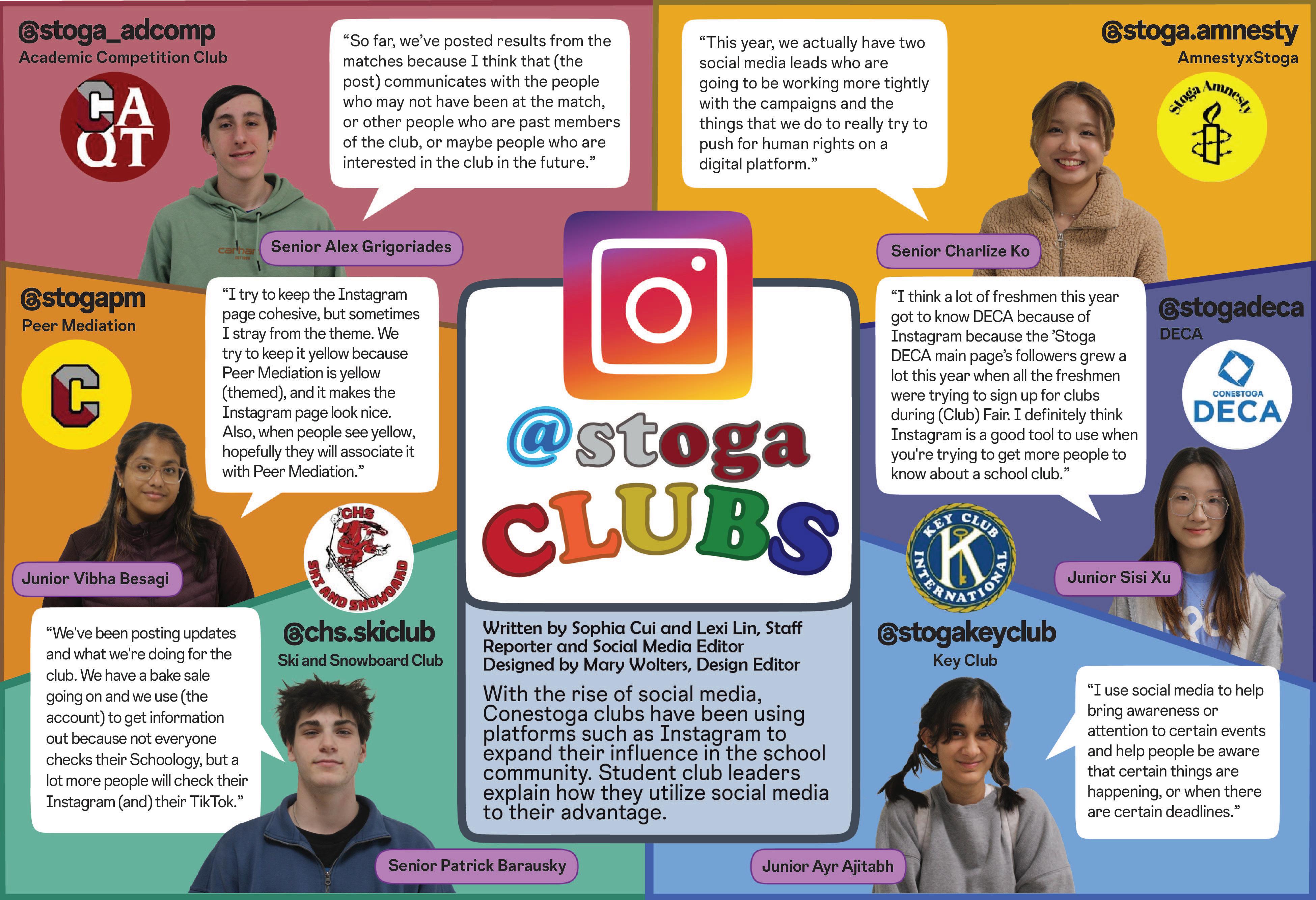

Sowmya
Krishna and Erin Zhang Appmaster and Staff Reporter
On Nov. 17 at 9 a.m., Wilson Farm Park buzzed with a large crowd of people awaiting the start of a 5K run and onemile walk. More than 100 runners participated in the events, raising over $4,000 for Ryan’s Case for Smiles, a national charity that supports children with cancer.
Senior Ryan Crill first worked Ryan’s Case for Smiles
during an Eagle Scout project, where he made coping boxes for siblings of children with cancer as a way to make them feel included and valued. Crill’s own personal experiences inspired him to start Stoga’s Case For Smiles, a Conestoga chapter of the larger organization. A member of his Boy Scout troop passed away from bone cancer, and his sister’s friend suffered from osteosarcoma.
“I realized how hard (her friend’s cancer) was for my
sister, so I wanted to help somehow,” Crill said. “Thankfully, she’s cancer-free now, and I’ve wanted to just keep helping because it’s such a great organization that does so much good.”
The club invited people from all different age categories, from children to senior citizens. The tickets for the event costed $30 each, and T-shirt sales and sponsor companies also contributed to the fundraising. The money helped purchase of fabric to sew pillowcases to brighten the hospital rooms of children with cancer and to create coping boxes to help support their siblings.
think (Ryan’s Case for Smiles) is a really good organization, and it helps a lot of kids.” Crill hopes the event will generate more interest in Ryan’s Case for Smiles. He wants the club at ’Stoga to continue to grow.
“It’d be awesome to have all these people come together, sort of spread some awareness about Case for Smiles and get people involved,” Crill said. “Hopefully just doing this has raised some awareness around the school about (the cause) and in the community.” LOOKING TO ADVERTISE YOUR LOCAL BUSINESS?
SEIZE THIS OPPORTUNITY to highlight your services while supporting quality student journalism.
Reach out to our business manager Shrija Krishnan at skrishnan@spoke.news for further inquiries.
Many students participated in the event to support Ryan’s Case for Smiles. Sophomore and runner Kevin Lukes decided to run after hearing about the organization’s mission and goals.
“It (the run) is for a real good cause,” Lukes said. “I
Scan the QR code to watch an accompanying package

Senior creates ‘Day
Mareska Chettiar Co-T/E Life Editor by ever since, posting mostly on Fridays but sometimes on special occasions like Halloween or football games.
Shoot, edit, choose music and post. Since her freshman year, senior Maryn Marscher has posted “Day in the Life” videos on her TikTok account, “marynsditlfs.” Marscher has since gained over 200 followers with her weekly posts, with some videos getting over 2,000 views.
“Each clip is a second to three seconds long, or even less than a second,” Marscher said. “They add up to about a minute, and they’re just snippets of my day, starting with me brushing my teeth to then throughout the day with some of my friends in my classes, going out to brunch, and then ending the day with my friends.”
Marscher started creating Day in the Life videos in February 2022, about halfway through her freshman year. She has continued the hob -
“When I started, I was like ‘This is going to be a Friday thing,’” Marscher said. “Fridays have been my favorite day of the week ever since I was little.”
After filming clips throughout the day, Marscher edits them to fit together in Instagram’s Reels feature. She exports the video to TikTok and chooses a song to accompany it. Marscher often features her friends in her videos, either waving in groups or individually as they spend time together. Senior Jasmine Scorzetti has been in almost every video and looks forward to them every week.
“I love them,” Scorzetti said. “They’re just such a good way for us to look back on our experiences throughout high school. The things we might forget, we can re -
member through the videos. I think they’re a really good way of bringing people together, too.”
Marscher feels that the improvements she has made in creating the videos and the changes she has observed so far — in other people and herself — are important in looking back on previous years.
“I guess (I was) seeing all that’s happened in the past couple of years,” Marscher said. “It’s cool to see how people change and how I’ve changed, with different friendships and even different teachers.”
Scorzetti believes that the videos help create a community, as many students know about them and are excited to participate and enjoy Marscher’s positive personality.
“People, when they see (Marscher), they want to be in her videos,” Scorzetti said. “They want to do stuff because she makes it comfortable for them.”
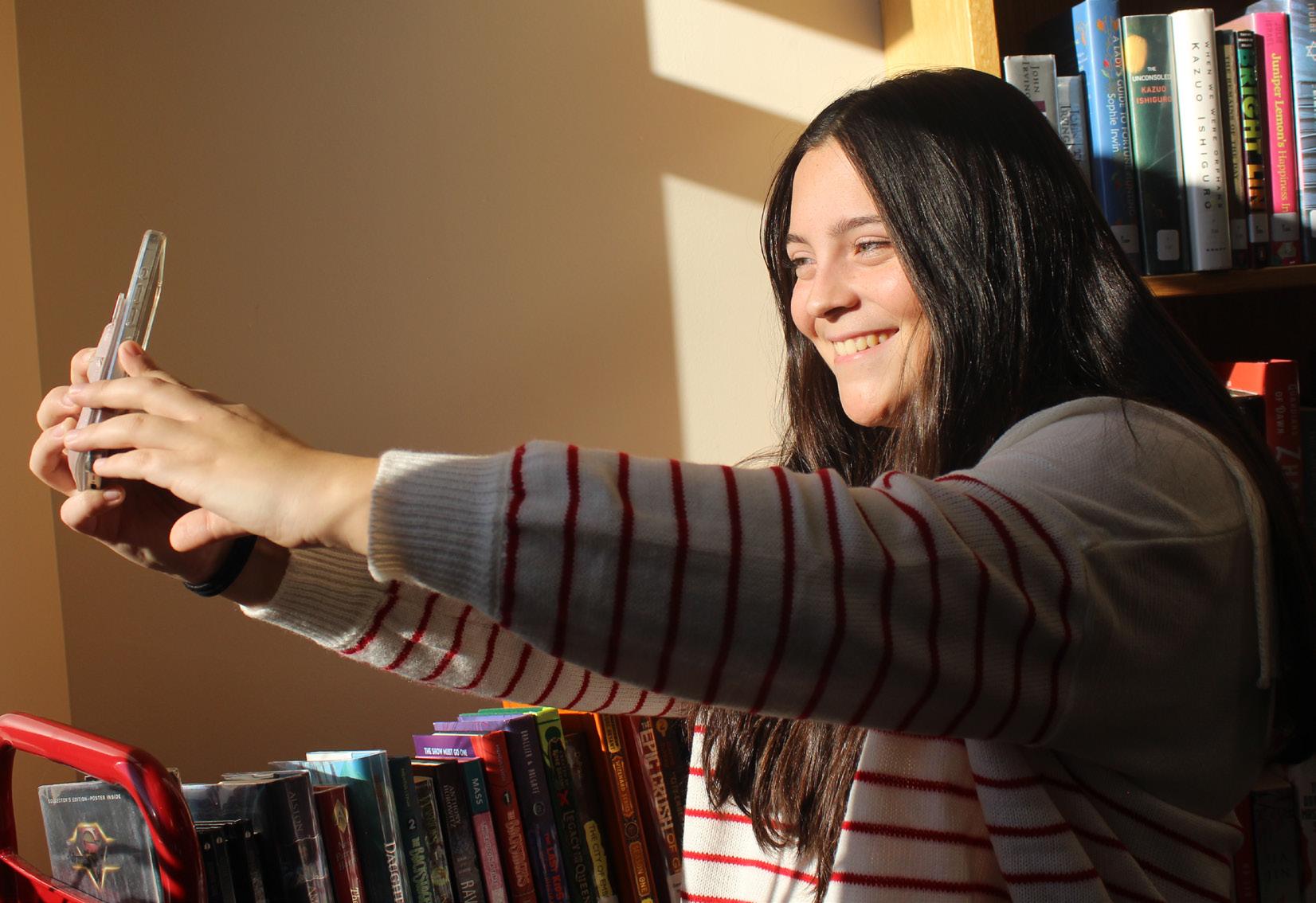

Monday, December 16, 2024


Mareska Chettiar
Co-T/E Life Editor
Forbes featured siblings Kanishka Rao, a 2014 alumnus, and Jahnavi Rao, a 2018 alumna, in its 30 under 30 North America 2025 list under the categories of healthcare and social impact, respectively. Kanishka Rao is the co-founder of Carenostics, a company that uses artificial intelligence to address the underdiagnosis of chronic diseases. Jahnavi Rao is the founder of New Voters, a nonprofit organization focused on registering high school students to vote.
Kanishka Rao studied economics and computer science under the Jerome Fisher Program in Management & Technology at the University of Pennsylvania after graduating from Conestoga. He interned at Blackstone, an investment management company, and McKinsey, a consulting company, where he worked in multiple fields like higher education, finance and pharmaceuticals before he realized that he wanted to pursue a healthcare career.
“I spent my last years at McKinsey working with healthcare startups in the U.S.,” Kanishka
Rao said. “Loved it, thought this was how I was gonna have my impact in healthcare, but then this tragedy happened.”
When the Raos’ grandfather passed away from undiagnosed chronic kidney disease, Kanishka Rao decided to co-found Carenostics with his father Bharat Rao shortly after.
“Had he been diagnosed in an earlier stage, there are preventative treatments, and he may have still been alive today,” Kanishka Rao said. “It felt like an obvious area to apply machine learning and AI to see (if we could) find patients like him earlier.”
Carenostics uses an AI model that learns from large healthcare databases. It gives patient insights to the physician based on their medical history and flags potential high-risk conditions. To date, the company has evaluated over seven million patients.
“Doctors have so much pressure on their time,” Kanishka Rao said. “AI and machine learning can find patterns in the data that humans don’t have time to see or potentially ones that they can’t find but make sense once they see (the patterns).”
Jahnavi Rao started New Voters as a club at the end of her
junior year at Conestoga after the results of the 2016 election. She ran the club’s first voter drive her senior year, and the organization officially became a 501(c) (3) nonprofit on May 2, 2018.
“I was a junior. I remember talking to people in the grade above me who were posting these long posts about the results of the election and asking them if they had voted. A lot of them said no,” Jahnavi Rao said. “That was so frustrating. I would’ve done anything to be able to vote.” After graduating Conestoga, Jahnavi Rao studied public policy and music at Harvard University and founded the Harvard Votes Challenge, an organization focused on registering people to vote at the collegiate level. It has a high school engagement branch, which worked with New Voters.
“When I went to college, I knew that I wanted to keep doing New Voters because this opportunity (was something) I really cared about,” Jahnavi Rao said. “I had this incredible group of people I was learning from and working with.” New Voters and the Harvard Votes Challenge came together
to form Boston Votes, an initiative which aimed to register students to vote in the Boston Public Schools district, which contained 16 high schools at the time. Since its inception, New Voters has begun chapters in approximately 1,000 high schools all over the nation and has raised about $800,000 in fundraisers this year.
“I feel incredibly grateful and lucky,” Jahnavi Rao said. “It is really bizarre getting an award personally for work that is done by 50 people (on staff) and thousands of students across the country. I feel humbled and honored to represent all the people that make up New Voters.”
The siblings look forward to attending the Forbes 30 under 30 events together. They encourage youth to follow their passions and become catalysts for change.
“Over time, fewer and fewer students actually stick to trying to innovate (and) build startups (and) nonprofits. My sister and I are just people who still wanted to try,” Kanishka Rao said. “To everyone at ’Stoga, just go for it. There’s so much time and so many things to do.”
Vanessa Chen and Nishta Subramanian Staff Reporters
When many students think of international fashion shows, they picture famous models on
world-class stages. However, on Sept. 5, sophomore Shirin Patel and junior Ridhima Parnati walked the runway for boutique GlambyRissh’s showcase at New York Fashion Week (NYFW) 2024 as first-time models.
GlambyRissh is an online fashion boutique based in Greater Philadelphia that sells traditional and fusion Indian clothing and jewelry. NYFW invited Charu Miglani, the owner of the business, to display Glamby-
Rissh’s designs at the Runway 7 show in Sony Hall. When she found out about the show, Miglani reached out to friends and family for potential models. Patel and Parnati, both family friends of Miglani, agreed to help with

Hannah Simon Co-Staff Development Director
Frustrated with how the media represents politicized conflicts such as the Israel-Hamas war, juniors Arohi Nepal and Zaina Sohail decided to take matters into their own hands.
This September, the pair began “Rights and Realities,” a podcast airing on Spotify that they hope will allow for discussion about uncomfortable topics.
“We wanted a tangible way to express our opinions and our feelings on conflicts like these that pierce bubbles of ignorance,” Sohail said. “On top of that, as young people, we’re seeing so many current events and human rights being violated around the world, and we feel like our voices haven’t been heard.”
“We needed to be careful in the way that we are giving this information, and making sure that whatever we do, we are not promoting any hostility towards any group in any way. Our goal is to be unbiased and to educate people on the topics that are going on currently,” Sohail said.
on the conflict, collecting an array of honest thoughts.
“When we’re discussing these cases, we really want people to realize other people’s humanity and morality. In the world that we’re currently living in, everything is so subjective. Everything is characterized by, ‘Oh, this person did this,’” Sohail said. “We hope that people realize that other people are also human and they deserve dignity.”
We wanted a tangible way to express our opinions and our feelings on conflicts like these that pierce bubbles of ignorance.
Zaina
Sohail
Junior and “Right and Realities”co-founder
Nepal and Sohail noticed a lack of unbiased news coverage nationally, a trend they believe leads to misinformation and violence. One of their main goals is to only present correct information, educating students so that they are able to form their own opinions and ultimately foster healthy conversations about human rights conflicts.
Because of this, Nepal and Sohail’s main challenge is in creating their script. In order to remain ethical, they make sure to use accurate, reputable sources, and when including information about the Conestoga community’s opinion, they pull from a diverse pool. For their first episode series on the Israel-Hamas war, they decided to conduct a survey about Conestoga and T/E community members’ perspectives
Nepal and Sohail believe in the power of podcasts to not only dispel misinformation but also motivate students with different opinions to become more comfortable in having conversations. Nepal and Sohail believe that podcasts are one of the most effective forms of media in facilitating open-minded discussion.
“We can all write stuff, we can all make Instagram posts, but being able to speak about your opinions I think puts a lot of emotion and reality to your words,” Nepal said. “You can type something out, but I think really only through your voice you’re able to really feel the emotion that people in these conflicts are facing.”

the showcase along with other models, including Miglani’s 16-year-old daughter.
“It (GlambyRissh) is something you don’t normally see, because fashion, I feel like it’s a lot of Western stuff, Western clothing. And then you see this Indian bridalwear,” Parnati said. “This is what you’d wear if you’re invited to a wedding — that’s what (Miglani) designed. I think we really stood out compared to the other people.”
Parnati and Patel modeled for the first time at the NYFW show. Leading up to the event, the girls practiced walking in heels and posing at Valley Forge National Historical Park. On the day of the show, the girls checked into their designated venue, had their hair and makeup done, put on their runway dresses and waited for their set to begin.
“When I was walking the runway, it was kind of cool to see all the audience, especially all the photographers that were there. It’s kind of nerve-racking to see so many photographers just clicking pictures,” Patel said. “Once I was off the runway, I felt more relaxed and relieved because in the moment, I was nervous that I was going to trip or something, but then in the end that didn’t happen, and I felt more relaxed.”
According to Patel, her mother cried when she walked the runway, and she felt very grateful to be able to share the unique experience with her family and friends. Parnati said that although her mother did not see the show because she was helping backstage, her father and brother were proud of how confident and professional she looked on the runway. Following the show, Miglani led the models to the middle of Times Square for a professional photo and video shoot.
“Everyone around there was staring at us. We had photos, videos, everything. The photogra-

phers wanted us to be ourselves, and there were a lot of people hyping us up, like ‘You guys look gorgeous,’” Parnati said. “It was really nice to go out there and be like, ‘This is New York City. This is a big city, and we’re in the middle of Times Square showing off these designs.’”
Although neither Parnati nor Patel have plans to pursue professional modeling careers, both girls are willing to model for GlambyRissh
again if invited, as they are now global ambassadors for the brand. They believed the show was a unique experience that helped them connect more to their culture through fashion.
“Her (Miglani’s) brand is very focused on bringing fusion and doing more modern and trendy stuff with traditional clothing,” Patel said. “As for my culture, it was really nice to see how the designs are now evolving.”
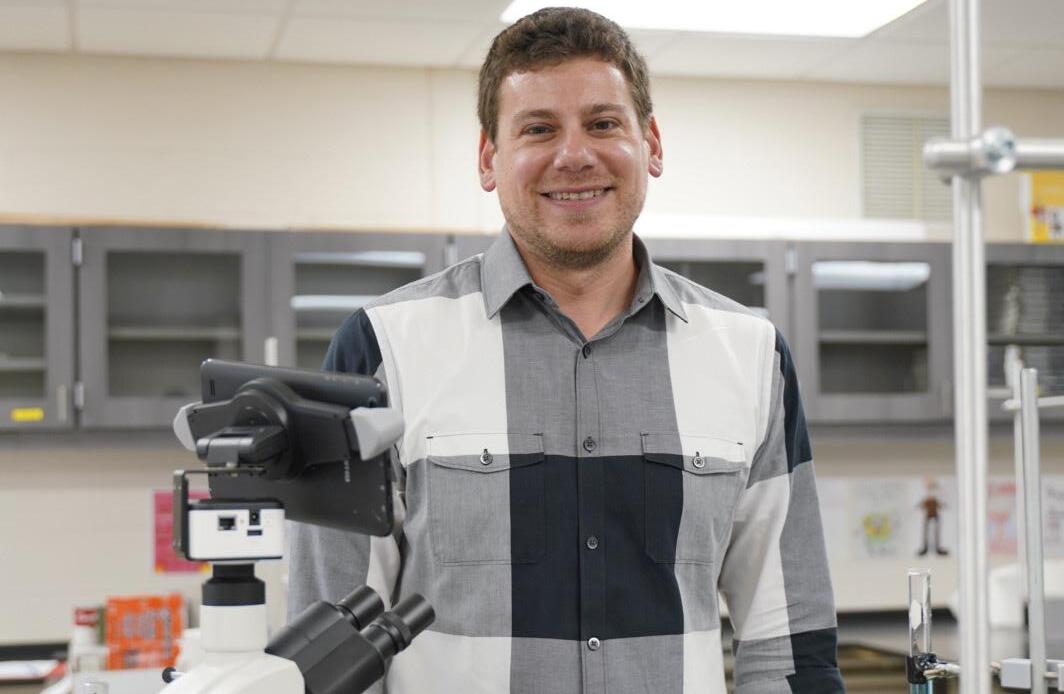
Milan Agarwala Staff Reporter
From his high school Advanced Placement Biology teacher encouraging him to pursue a biology major and chemistry minor at the University of Pittsburgh, Chemistry and Forensics teacher Salvatore Colosi always knew he wanted to teach. Colosi started his career at Conestoga 12 years ago as a long-term substitute teacher and has taught here ever since.
Q: What is your favorite aspect of Conestoga’s community?
A: How passionate the students are for learning. I’m well aware of how lucky I am to be teaching here for kids who care, families that care and a staff that cares.
A: What are some of your favorite memories from your 12 years at Conestoga?
A : I’m really proud of the Forensic science course that we developed. Dr. Best and I developed the course six years ago. We had our vision for it, and we were able to make it the course it is today, just exactly what we wanted. It’s awesome being able to teach electives, especially when it’s a new course: If you put your name in a hat to teach it, and if you’re selected, they really give you free rein to design the course. It’s great because
a lot of the students who take it do so because they’re genuinely interested.
Q: What is your favorite forensics story?
A: I think the O.J. Simpson case was just such a landmark case. First, it was the fame aspect. It was that it was broadcast on TV live every day, which never happens anymore. It was every day. I was 5 or 6 when it was going on, and I remember it being on the TV in my house every day. But in terms of science, it was the first time that most people in this country heard about DNA evidence because that technology was just coming into its own, and that was the first famous case where DNA was used. Now, everyone expects DNA in every case.
Q: What is your favorite concept to teach?
A: I like stoichiometry a lot. I also really like talking about light and electrons in chemistry, how the two kinds of particles and waves can be one and the same and how they create all these phenomena that we see every day. It’s so hard to conceptualize, but it is really cool.
Q: What is your favorite piece of lab equipment? What does it do?
A: It’s a giant one, but we got it for forensics. We have a Wi-Fi microscope. It is a double-lens
microscope, and what you do is we have a tablet that we can mount, and whatever is on the slide shows up on the tablet. It’s awesome for a whole class to look at something. We use it mostly in forensics during our counterfeiting chapter. We talk about all the security features of money. So we’ll take $50 and $100 bills, put them on here, and you can see all the detail that goes into making the bills that you could never see just by looking at it.
Q: What is your least favorite lab equipment?
A: The plastic test tube racks because the wooden and metal ones are so much better, and they never actually hold the test tubes.
Q: What do you like to do in your free time?
A: I love running, cooking, reading and spending time with
nerd the books, the movies, everything. I’m usually reading something from Tolkien if it’s not “The Lord of the Rings.” I coach my daughter’s softball team. My son’s going to start T-ball this spring.
as our spot every summer.
Q: What is one message you would give to the world?
A: Be kind to everybody. It’s simple, and it would solve many problems.

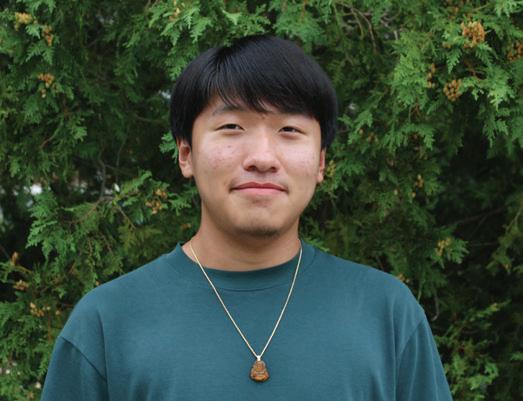
In all the packages of Benson Boone calendars delivered to The Spoke, I have never been in so much disbelief: Where are all the photos of me?
Fact-checked by stock media company Photutorial, we capture 5.3 billion photos daily — nearly two trillion photos by the end of 2024. The fact that I have not seen my face once — not even in a 0.5 selfie — in any of these is baloney. I meet (and exceed) quite literally ALL the qualifications of being an icon.
I had my “B(rat) Summer” I think it’s fair to say I carried the whole pop industry on my big back in every possible way. According to my Spotify Yapped, I am in the top 0.00000360% of Charli XCX listeners this year from streaming her “Brat” album 365,000 minutes a day. And as an apple on top, I’m obviously wearing the iconic greenscreen shirt all day, every day, even in the cartoon you see right there! at’s the epitome of iconic.
I don’t know what is. Okay, perhaps I’ll admit that I’ve never “formally” won a game of DTI; my toxic trait of rating every-
get my owers for the e ort I put in my strut and “Pose 28?” I swear I’m giving “very cute, very demure.”
clearly result in clear, smooth skin such as mine? Once the world sees my heaping wall collection of Hydrofacts bot-

My top model status on Dress to Impress If my title of “Top Model” on this Roblox dress-up game isn’t worthy of a 0.5 sel e, then
one one star so I can win has opped on me many times… even though all the other divas do it. But seriously, when will I
I chose Hydroflasks over Stanley Cups I don’t get it; how does one deny the fact that Hydrofacts
tles — and endorses all my totally not copy-and-paste redesigns — I’ll surely make the calendars this time.
My Brawl Stars win streak Maybe — just maybe — if I spent just 10 more minutes in homeroom grinding on Brawl Stars, I could finally win a game. All I have to do now is have my eyes glued to the screen — at home, at school and in fanny packs — and I’ll soon be the world-record holder in Brawl Stars trophies.
Plagued by the perm-idemic Here he goes again… Patrick Perm, the prodigy of poor reviews. Sure, you may still be a perm-truther, but I fear this hooligan will never give you a break. He thinks these permissible

Co-Editor-in-Chief
In 2014, director Christopher Nolan premiered “Interstellar,” a movie that has rmly cemented itself among the greatest space lms of all time. With its rerelease 10 years later, in a world that has since changed in unimaginable ways, Nolan’s cosmic odyssey reminds us that our humanity was, is and always will be our greatest strength. In the midst of extreme food shortages and climate change, Joseph Cooper, a father and NASA pilot, reluctantly leaves his daughter Murph and his son Tom behind to lead a space expedition to examine planets that could potentially serve as humanity’s new home. With the weight of humanity’s survival resting upon his shoulders, he ies through a wormhole into the unknown with three crewmates. Drawing on his love for his children, he overcomes
obstacle a er obstacle, from near-death encounters with inhospitable conditions to an astronaut attempting to betray all of humanity to save himself. From start to nish, “Interstellar” is the epitome of what cinema should be: action-packed yet heartfelt, melded with the spectacle and gravitas of a true Hollywood gem. Before beginning to illustrate the high stakes of the mission, Nolan opens the lm by zooming in on Joseph Cooper’s everyday life with his children and his role as a loving father. No matter the problems that exist in the world, the audience sees that the family’s run-down farmhouse is home for him.
In fact, if it wasn’t for the title of the lm, the audience would have no idea the story would even unfold outside of county limits, let alone the planet. rough his storytelling, Nolan covertly lays the foundation for the enduring motif of love that guides and motivates Joseph Cooper throughout his journey full of uncertainty.
As he ventures onward, Nolan’s signature style of stunning visuals spreads its wings, taking advantage of the otherworldly landscapes and star-
ry expanses the plot o ers. Simultaneously, the movie’s soundtrack is a work of art on its own. Cra ed by Academy Award-winning composer Hans Zimmer, the “Interstellar” theme song, with its characteristic lonesome piano and eventual swell into a full orchestra ebb and ow, provides you the feeling of hearing your heart beating in your ears as Earth grows smaller in the rearview mirror. Overall, Nolan does fall short in one key respect: cinematography. Although what he shows in the scenes themselves is beautiful, the way he shows them is cut and dry. e vast majority of the lm uses a bland mix of medium and wide shots. With the exception of very few action-heavy scenes, Nolan’s cinematography illustrates the story but doesn’t quite add to it.
However, the character development, visuals and soundtrack tell a beautiful tale of a father setting out in search of a better future for his kids.
As our own world continues to evolve, we should remember to look inward for compassion and determination — just like Joseph Cooper forging a better path forward.


weaves are permitted in a 0.5 selfie such as mine. His delulu is not the solulu; I mean, have you seen Mr. Benson Boone? He is absolutely not nonchalant. Those unphotogenic monstrosities of bird nests are sure to give you permanent whiplash.
Despite all my efforts, I am yet still a flop. Even though I’ve hopped on these totally ridiculous trends, from Gruving out to that B(rat) album to snatching that
in DTI to hide my
head, I have yet to be at Mr. Benson Boone’s standard. Life is just like that sometimes. We’re hoping for a unicorn (me), and we get a goat (Mr. Boone — the buffoon). But I know what I must do in 2025: I’ll create a new device called Photocrop, and once I crop out all my meddling minions, I’ll be Times’ Person of the Year. It will just be me,








Raima Saha Co-Managing Editor
“Why should I get a job? I’m busy enough already as it is.” ese are the words I uttered to my parents countless times over the course of the past year, insisting that I didn’t need a job. A er nally caving in and nding a position as a cashier at my local Rite Aid, I admit that I am thankful for heeding my parents’ advice. ere are just some things part-time jobs can teach that other extracurriculars cannot.
Most obviously, a part-time job provided me with a source of income. Not only was it convenient to have extra cash on hand, but having my own money also





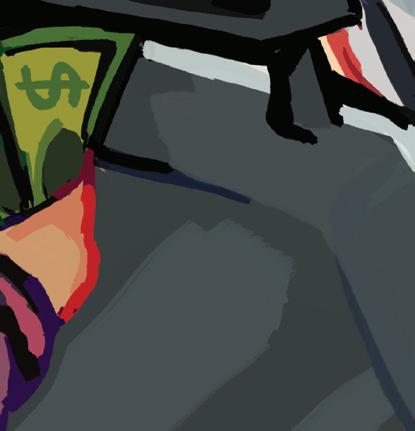






Why every teen should have a part-time job
provided many learning opportunities. I vividly remember going with my parents to Bank of America to set up my checking and savings account and learning the di erence between a W-2 and W-4, which provided me a glimpse of adult life.
Having money in my bank account made me feel like I could take over the world. With the power to make purchases at my discretion, I learned the true value of money and to spend it with care. Frequent purchases I o en used to make with my parents’ money now seemed extravagant and unnecessary. I also never would have considered asking for the 150-count set of Prismacolor colored pencils, retailing for up to $180, from my parents, but with my money, I ful lled a dream that I had for 7 years. Additionally, part-time jobs are chock-full of lessons for skills needed as to gain independence. According to a study conducted by professors Dr. Christopher Ruhm and Dr. Charles Baum from the University of Virginia
and Middle Tennessee State University respectively, high school seniors who worked part time experienced numerous career bene ts. such as higher wages, increased earnings and less time unemployed. It is easy to see why — customer service, responsibility and organization are just a few out of many skills that any job requires.
Some may argue that holding a part-time job might not be feasible for high schoolers. With jam-packed schedules, it’s hard to nd room to t yet another commitment. Additionally, the added pressure of being in the real world means facing real-world issues, such as a condescending customer or impatient children.
While some of these concerns may be true, many fail to consider the plethora of jobs that are exible in nature such as babysitting or dog walking. During the school year, I work one evening per week at Rite Aid to accommodate my busy schedule.
Additionally, stressful experiences are a part of the messiness
of life. By getting a job, I was able to get a head start on developing con ict resolution skills and learning how to handle various types of people. Personally, I can say that while I have experienced a condescending comment or two, varying from criticizing my ability to count to “Why is the transaction taking so long?” I barely recall those experiences. What I do remember are the positive moments. From the time I helped a group of middle school boys nd Mentos so they could explode some Coke bottles to the time a kid who was two dollars short ran back home and paid me back in four quarters and 100 pennies, I will always remember these experiences more than the negative ones.
Part-time jobs provide more bene ts than you may initially think. While they may not be the most glamorous extracurricular, they are a treasure trove of learning opportunities, so consider adding “get a job” to your New Year’s resolutions this year. You won’t regret it.
Donald Trump has a con icting history with the press. During his 2020 reelection campaign, he sued e Washington Post for defamation in two opinion pieces, one week a er suing e New York Times for the same reason. en, in November of this year, as revealed in a letter addressed to lawyers at e New York Times and Penguin Random House, Trump’s attorneys demanded $10 billion in damages over “false and defamatory” statements made in a book by Times journalists regarding his nancial dealings, despite e Times maintaining that the reporting is accurate and including evidence in a statement.
According to the Committee to Protect Journalists, Trump has published 1,339 tweets about the media that were “critical, insinuating, condemning or threatening” since his 2016 candidacy announcement. In 2019, he said journalists were “truly the ENEMY OF THE PEOPLE” on X, formerly known as Twitter.
Given these instances, the near future of the press is more than unpredictable — it’s worrying. Trump’s remarks directly target news outlets, despite journalism being the only constitutionally protected profession: The First
Amendment states “Congress shall make no law … abridging the freedom of speech, or of the press.” On top of that,
Daily Collegian, the student-run newspaper at Penn State, received a 100% funding cut by the university in 2023, which
But to create a society where press and speech restrictions are acceptable endangers a hallmark of American democracy.

professions in traditional media are quickly declining. According to researchers at Northwestern University, the loss of local newspapers accelerated in 2023 to an average of 2.5
will bring its funds to zero by 2025. Just this past September, Penn State removed all on-campus copies of the publication, claiming the students violated the college’s advertising rules.
In 2017, e Washington Post adopted a slogan: “Democracy dies in darkness.” For as long as we — the student journalists and advisers of e Spoke — have been in the newsroom, our mission has
e Spoke Editorial Board voted 20-4 in favor of this editorial, with 0 people abstaining.
“It depends on the situation. If you use AI, just don’t copy the whole (assignment) down.”



been to bring light to the voices of our school and community. However, the ease with which legal attacks transpired and harmed the ability of local publications like e Daily Collegian at Penn State and large newspapers like e New York Times to report the truth will always concern us at the high school level. We cannot write Trump’s actions o as antics or empty threats. He has shown that he will take action against the press, and his intentions are clear: to limit his dissenters, including youth, in journalism. inking of the next four years instills a feeling of uncertainty. Our ability to serve Conestoga by reporting ethical and truthful stories is what de nes our responsibility as student journalists. Potential future restrictions sanctioned by the government are not just a risk to our sta and advisers, but also to the news coverage of our community. Regardless, the stories we present will continue with the intention to report the news so that community members make informed decisions. We hope this will always be the case for the future of e Spoke, no matter who the president is and what opposition we face as student journalists.










Q: Should students be allowed to use AI in school?


“I think that students should be able to use AI in some kind of form during school because it does provide a really good tool to help students learn, but there’s a point where AI becomes plagiarism. Asking AI to write a paper for you — that’s pushing the boundaries.”

Jack Myers, sophomore -








e year is 2040. You wake up to the sound of your alarm at 10 a.m., step onto your robot hoverboard and unlock your phone to ask ChatGPT-600 to generate you something for breakfast before going to the bathroom where your toilet speaks to you and your mirror also functions as your dermatologist.
Okay, I concede, this probably — hopefully — will not be anyone’s reality in 16 years, but with AI, this dystopian future is not out of reach. The negative effects of AI manifest in numerous areas such as education, art and

“To a certain extent — I don’t think you should copy and paste what the AI says, but instead use it to get inspiration and a starting point for certain things.”



Richard Zhang, junior -

perhaps most concerningly, climate change. In education, students have become more reliant on AI for completing assignments. With a simple ctrl+C and ctrl+V, you can run your teacher’s assignment through a large language model (LLM) like ChatGPT and receive nearly perfect answers. Just tweak the wording a bit, and it is like the LLM was never there in the rst place.
A 2023 Pew Research survey done by Luona Lin found that 34% of high school teachers thought AI was doing more harm than good for their students, and I agree. By using technology instead of your own skills for everything, you cannot grow intellectually and run the risk of falling behind in your academic career. When it comes to art and media, AI really becomes controversial. People generate images they call “art,” create videos for social media and even deepfake others. My problem with AI art is that it is unoriginal, uninspired and unnecessary. It is okay to not be
good at art, but do not use generative AI to play pretend as an artist. Art is a distinctly human concept, and using a computer that only speaks in zeroes and ones to make “art” feels like a slight against humanity itself.
e environmental impact of AI might be the cherry on top of this ugly, bitter-tasting sundae of problems. Training one AI model requires thousands of megawatt-hours of electricity and hundreds of tons of carbon emissions.
e cooling systems of data centers also deplete our already minimal freshwater resources. Additionally, sustaining the amount of electricity needed for LLMs and other models requires huge amounts of fossil fuel energy, actively worsening air pollution and climate change.
Shaolei Ren, associate professor at the University of California, Riverside and Adam Wierman, Carl F Braun Professor at the California Institute of Technology, expanded upon the problem in their article for the Harvard Business Review. e professors
reported, “All these environmental impacts are expected to escalate considerably, with the global AI energy demand projected to exponentially increase to at least 10 times the current level and exceed the annual electricity consumption of a small country like Belgium by 2026.”
I do not think it is a bad thing to use AI to summarize a di cult passage in your reading or brainstorm a list of topics to study for your test, but when students become overdependent on AI to complete every task, it gets muddy. AI strips us of core human values, like intellectualism and art, and destroys the environment.
I urge all of you to think twice the next time you want to use AI to ll out a ve-question assignment or generate a silly video for Instagram Reels. Ask yourself if it is necessary. We all need to preserve our humanity as much as we can and o set the harm a fully digital age might cause. Use human intelligence, not arti cial intelligence.


“I’ll say if they are trying to nd resources, I think that is the nice way to use it, not to cheat (using) ChatGPT.”





Amber Bowden, senior -





For me, Monday through Friday used to be a trial of extreme endurance. I would rush home and frantically nish my gigantic stack of homework as quickly as possible, praying I could get to bed by a decent time. As someone who struggles with time management on a day-to-day basis, getting my work done was a heavy ordeal from freshman to junior year. But when I discovered time management apps last summer, my whole world changed. Notion, a productivity app that provides a full workspace for you to manage any assignment, allows me to keep track of all my work in one app by tracking the specific status of certain assignments and also creating multiple reminders for big deadlines. Additionally, Google Calendar lets me create reminders for specific events that I need to attend so that in the midst of academic
chaos, I can still remember where I need to be. These apps have transformed my workload from one causing constant anxiety and dread to a methodical system that always gets me to bed on time.
Even though these time management apps may seem like even more work at rst, they can really help students regulate their workload. In a research study by Ajou University and Seoul National University, 46 college students were tested on their abilities to set goals, strategize the completion of work, monitor their progress and be motivated to complete



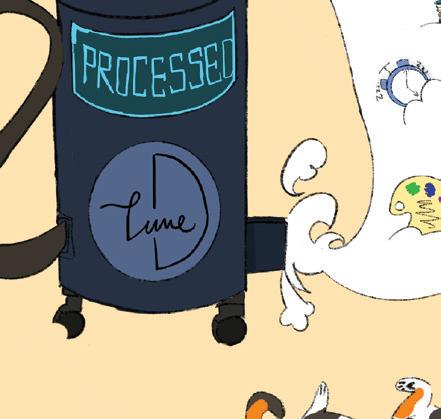

their work. When implementing a smartphone application for these students, the researchers observed that the app had an overall positive impact on the students’ ability to set goals and strategize the use of their time. It might be more work at rst to set up these apps and track your workload daily. But whenever I’ve used these apps to make

Emily Wang/The SPOKE
a plan, I could take a deep breath and relax about my assignments. Instead of frantically panicking and assuming the worst, I would formulate a plan on how to nish all of my work during the week, before it even reached Monday. at additional work was de nitely worth it because it has brought my anxiety down to minimal levels every day. e use of time management apps will also make you more e cient, as proven by a survey-based study conducted by the National Conference on Education on 25 students from the National University of Modern Languages. 65% of the students were able to complete their tasks according to their schedule because of productivity apps. ese apps don’t just help in reducing stress: ey genuinely reduce the amount of time it takes to do work. By organizing all my work into speci c days and making a strategy to complete them each day, I nd that it ends up taking way less time to nish a day of work, as I spend less time worrying about whether I can complete my assignments and more time actually working on them. Time management apps were the best thing to ever happen to me. ey’ve helped me to manage all the small pieces of work and focus on the true big goals.
Abby Chong and Anvita Mohile Co-Sports Editor and Staff Reporter
As they ran the five kilometer course over grassy hills and rocky terrain, seven girls from Conestoga finished their final run of the state competition.
On Nov. 2, the girls’ cross-country team competed at the 2024 PIAA State Championships in Hershey, Pennsylvania. At the competition, the team placed fifth overall out of 20 teams, and junior Alexia Tubbs placed ninth overall out of 237 runners. Last year, only Tubbs participated in the individual state tournament from the girls team.
“Last year, we were expecting to go to states, but unfortunately, we didn’t have the best day, so we missed it slightly,” Tubbs said. “It (states) was a really nice redemption feeling, and we placed a lot higher than we expected. It was a really exciting atmosphere, and it was just really fun to experience.”
On a typical day of practice, math teacher and coach Richard Hawkins begins by meeting with the runners to discuss lessons or potential strategies before breaking into smaller groups. In these groups, runners do the workout for the day, either long or short-distance runs, before returning and stretching as a group. Over the years, Hawkins has seen the cross-country team grow
in numbers and popularity. Students in all grades have shown interest in competing for the school.
“The team is really big, but everyone knows each other,” senior Rebecca Schmidt said. “Everyone is always super nice, and it’s a really positive environment.”
Schmidt has been a member of the cross-country team for four years. During her time on the team, she has not only seen improvements to her race times but has also built lasting friendships with her teammates. One of Schmidt’s favorite parts of being on the team is the constant positive and supportive atmosphere, which remains strong despite the large number of runners.
“I chose to do cross-country because my sister was on the cross-country team her senior year, and she always talked about how great of an environment it is — always doing things with friends,” Schmidt said. “I wanted to be part of that.” Hawkins believes that no matter the outcome of a meet, the focus should always be to try and improve. He emphasizes that every runner should strive to get better each day, no matter how well they perform.
“I’m a teacher, coach and I’m a parent as well,” Hawkins said. “The biggest reward I get (is) seeing kids dedicate themselves, work hard and then see the benefit of the hard work that they do”.
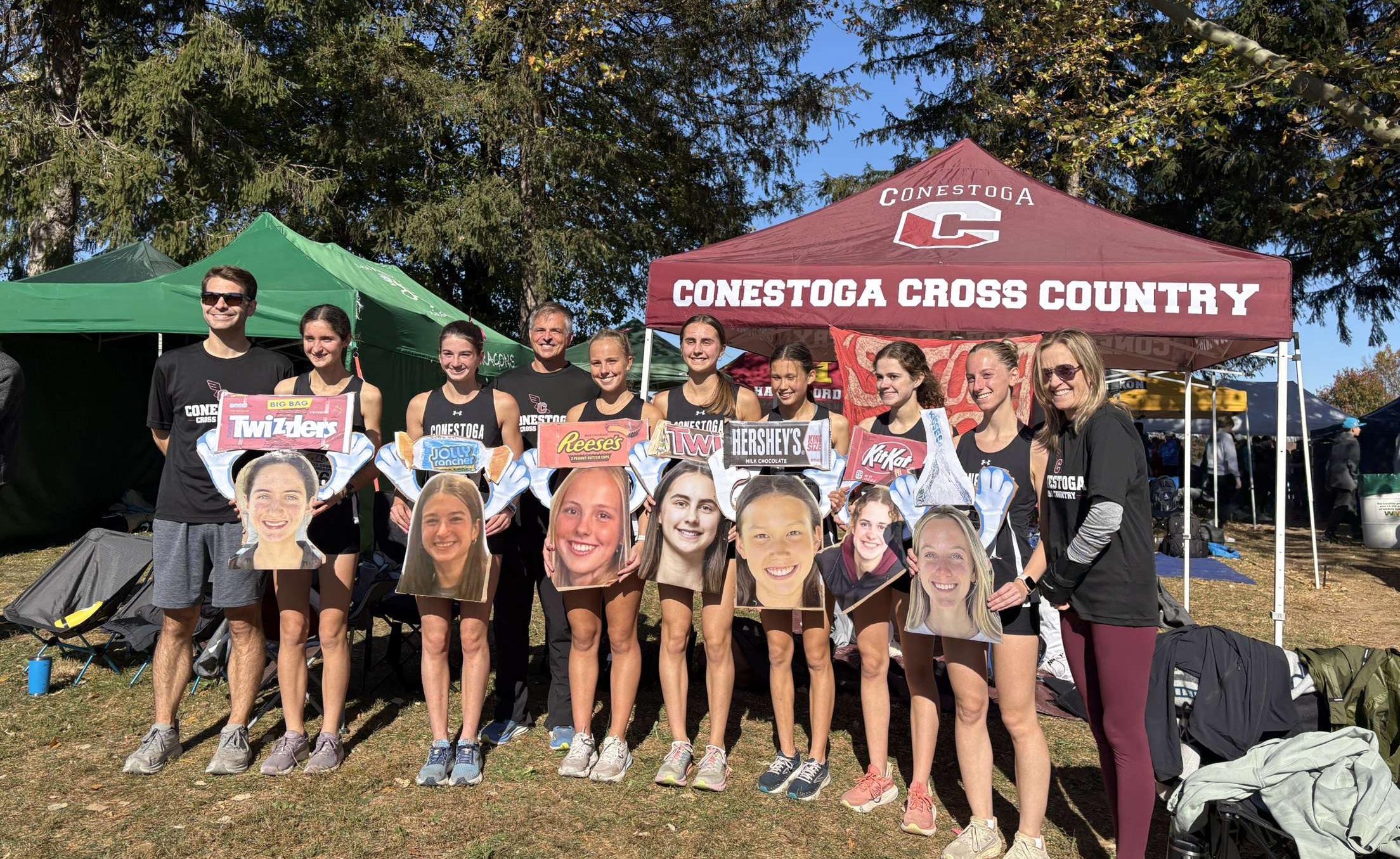
“I came from a one-parent home, and we didn’t have a lot of money. As a result, I couldn’t play sports because A, the costs were prohibitive, and B, only
when they seek athletic opportunities. It is crucial to recognize and address the needs of these overlooked students by acknowledging the mental, physical and social benefits of youth sports. Implementing programs that offer financial assistance or
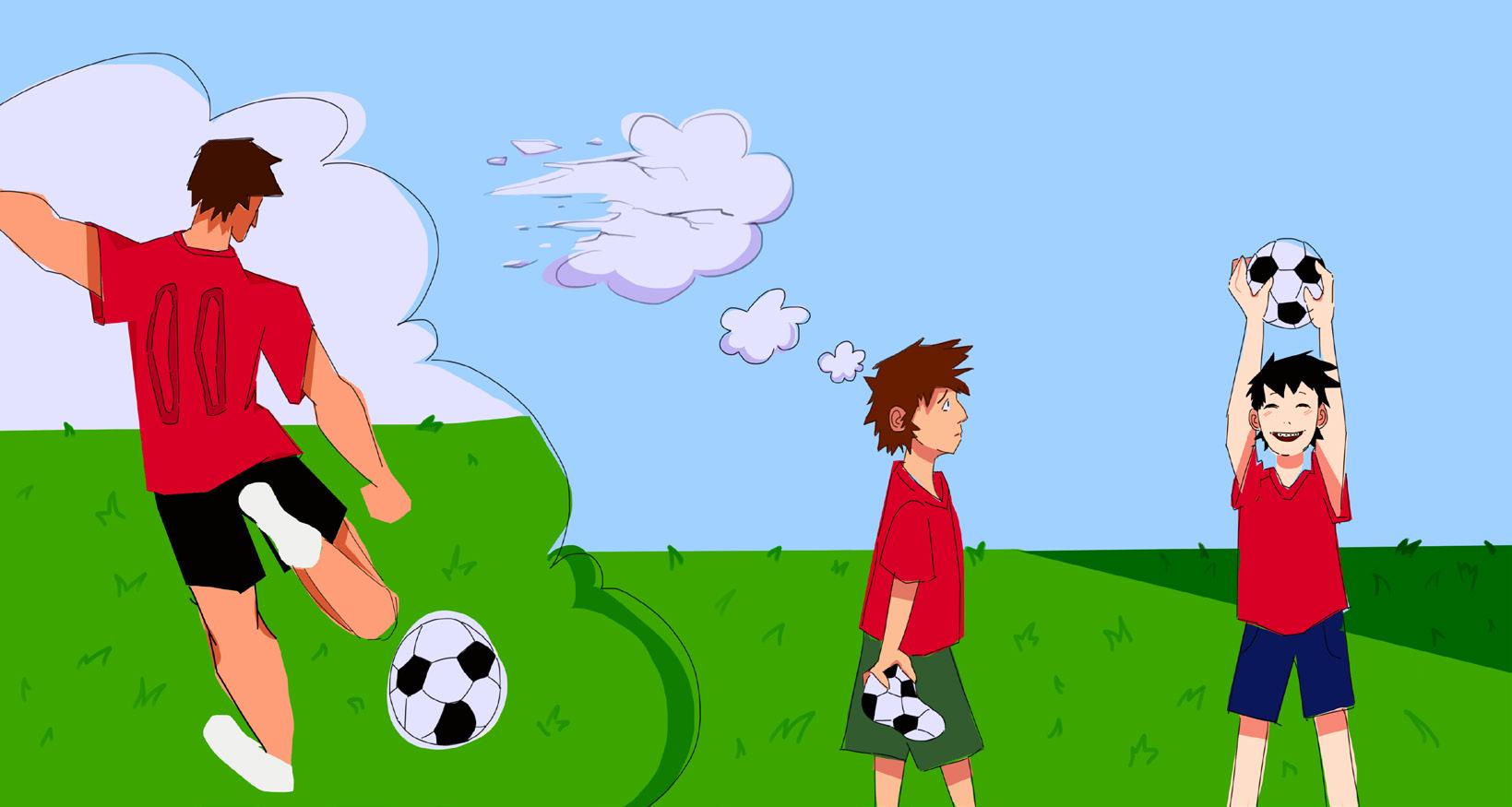
create accessible opportunities for all children would be a real measure of striving to achieve equity in our school district.
In Tredyffrin Township, the median income is around $154,000, 111% higher than Pennsylvania’s median income of just over $73,000 in 2022, according to the U.S. Census. This leaves families who don’t meet this “average” income threshold behind: Many cannot afford private lessons or pay for sports equipment and costly travel teams. As a result, lower-income students within our school community are marginalized, despite the advertised value of engaging in physical activities during childhood. When the time comes to join high school teams and pursue college recruitment, kids from disadvantaged backgrounds are often outmatched by affluent peers with years of coaching and travel team experience.
A 2013 systematic review by five health sciences professors
in the International Journal of Behavioral Nutrition and Physical Activity highlighted the social benefits of sports, especially team sports. These include improved social interaction, stronger relationships, and a sense of belonging, all of which contribute to psychosocial health. From my own experience, I came out of my shell through playing on youth soccer teams. Supportive coaches, energetic teammates, and encouraging parents boosted my confidence, motivating me to excel in the sport and socialize. These gatherings fostered a strong sense of belonging beyond school.
The overwhelming number of physical and mental health benefits of youth sports are highly connected to the social aspect of teamwork and friendship. Obviously, a kid may develop stamina or gain strength from participating in their chosen sport, but according to the
President’s Council on Sports, Fitness and Nutrition, what often is overlooked is how daily exercise, especially with other children around, reduces stress, assists in endorphin release, improves self-esteem, mitigates mental health problems and boosts self-image. Additionally, the camaraderie and teamwork youth sports foster can create a supportive environment that further enhances children’s emotional resilience and overall mental well-being. Now, some may argue that there are less expensive sports to pick up without joining a formal team, like running, basketball and soccer. To this, I say that it is totally possible to excel in a sport without formal coaching. I made the JV tennis team my freshman year despite never taking a formal tennis lesson, just years of playing alone. However, it’s unlikely that I’ll play in a professional setting. Why should
less affluent kids have to limit their athletic options and assume their inferiority to more affluent players in a sport? It is not inclusive to regularly see well-off kids make high school sports teams and receive recruitment offers, while disadvantaged kids, despite working their hardest without formal coaching, are often left behind after tryouts. I suggest that the Foundation for Learning in Tredyffrin-Easttown, should provide accessible, high-quality sports programs, starting in elementary school with formal lessons. By taking these measures, we can begin to close the wealth gap in youth sports and ensure that every child has a fair shot at pursuing their athletic dreams. here are more measures our school district can take to provide more athletic resources to mend the wealth gap in childhood sports.
being there as a freshman because I knew a ton of people there. I knew this is just my freshman year; I have three more years to build on it,” Johnson said.
From Oct. 21-22, freshman and boys’ golf team member
Will Johnson competed at the PIAA Individual Golf State Championships at Penn State. He battled through two rounds against some of the state’s best golfers on an 18-hole course that required over 10 hours of match play. Johnson was the only member of the Conestoga boys’ golf team to qualify for states at the District 1 Golf Championships on Oct. 14. At states, Johnson placed ninth overall with a score of four under par, making him the only freshman to place in the top 10 out of a total of 72 players.
“It (the state championship) was super fun. It was awesome
Johnson began golfing after his parents enrolled him in golf lessons when he was 5 years old. His interest in golf was piqued when he was 8 years old after he decided to get involved in more competitive tournaments.
participate in the Hurricane Junior Golf Tour, a national tour that conducts junior golf tournaments in 24 different states and ranks players based on the points they gain from competing
within the Boys 14-15 division of the tour.
My parents got me into lessons because I was trying something new. It kind of clicked, and it
“My parents got me into lessons because I was trying something new. It kind of clicked, and it was just something that I really enjoyed,” Johnson said. Johnson chose to start competing at the national level when he turned 13. He decided to
was just something that I really enjoyed. Will Johnson Freshman and
in these weekly tournaments. So far this year, Johnson has accumulated a total of 11,150 points, ranking him third nationally
boys golf player

“I think I started noticing how well I was actually amongst other kids when I was probably 13 because that’s when the rankings got a little more serious,” Johnson said. “It was like, ‘Oh, I’m actually up there with some of the better kids.’” Johnson and the team are excited to see what he will accomplish in his upcoming years of playing golf for Conestoga.
“He’s driven. There’s no external factor that’s driving him; it’s in him. It’s intrinsic. He wants to do it, so he’ll keep doing it,” boys varsity golf coach John Jones said. “As far as working at his game, practicing getting better, he’s got the mental game for it and the physical abilities. I actually think it’s going to be fun to see what he will accomplish.”


Rowan Chetty Co-T/E
On Nov. 24, 12,381 run -
ners crossed the finish line in the 2024 AACR Philadelphia Marathon. I raced among them, finishing in three hours and 11 minutes and placing 11th in my age group.
Inspired by my father, who has run nine marathons, I wanted to challenge myself to complete the 26.2 miles. I initially feared the distance, unsure if I could finish, but after consulting with some teammates who were running the marathon, I was inspired to join them.
As a cross-country and track runner, running is part of my daily routine. However, preparing for a marathon was a completely different challenge. Rather than focusing on speed and anaerobic performance, I had to transition to building stamina over a longer distance. After completing the cross-country season in October, I began my marathon training, switching from shorter runs to longer distances. The transition was initially challenging, as the runs were mentally and physically tiring, but after a few long runs in Valley Forge National Historical Park, I felt confident going into the marathon.
On race day, I woke up at 5 a.m., feeling anxious for the

Philadelphia
in three hours and 11 minutes, placing 11th in his age group. He will continue to run during the winter track season.
long
ahead of
had my AirPods, running gels and a pair of sunglasses before I left for the city. A small toasted cheese sandwich was all I could stomach before my teammate, senior
to the starting line in Philadelphia. Security was tight, but we found a quick line and headed to our race corrals after a quick warm-up. My corral was packed with fellow runners, nervously waiting for the race to begin. After a


Staff Reporters
Players gather around computers and consoles in hopes of victory. As the world of esports expands, its popularity has grown. The increased interest in video games has led to teams and competition.
Sophomore Alex Hong has begun to develop Conestoga’s own esports team.
The definition of esports — competitive video games — applies to games such as Rocket League, League of Legends and Super Smash Bros. Other esports are first-person shooter (FPS) games. These FPS games are played through the perspective of a character engaged in weapon-based combat. Hong began to form an esports club during his freshman year, but he faced challenges when looking to receive approval from the administration.
“It was difficult getting approval because the school did not approve of FPS games, and for this reason they refused to ap-
prove an esports club. So, I continued to email them, and even though they still aren’t supportive of FPS games, they are allowing the other games,” Hong said. Hong received approval and asked biology teacher Derek Bosworth to advise the club. Bosworth competed in esports in college and is currently the head coach of the Neumann University esports team. This experience has helped him in his new role as the esports team’s adviser at Conestoga.
“My job at Neumann has helped me foresee possible issues that can arise with matchmaking as well as problems on the day of matches,” Bosworth said. “Esports is a lot different than football or other sports because your football doesn’t not work one day. But in esports, there can be tech problems that need to be fixed quickly, and I have experienced that at Neumann.”
Along with his coaching experience, Bosworth also helped to develop the club by setting goals to grow the membership
and diversify the games the club offers.
“This year, we are only playing Rocket League. Next year, I would like to expand it to other games besides just Rocket League. Maybe League of Legends or Super Smash Bros. My goal is to open the club up to as many people as interested,” Bosworth said.
“Some people are going to want to play something that we aren’t going to offer, so if we open it up to more games, then more people can participate.”
As the club continues to welcome new members, Hong does not want to lose sight of the reason the club began. His biggest motivation came from his passion for video games and his eagerness to share it with others.
“I wanted to start an esports club because I have been playing video games for a while and really enjoy them,” Hong said. “I have seen a lot of other schools in this area have an esports club and loved the idea of bringing people together to experience the fun of video games as well as the competitiveness.”
few speeches celebrating the 31st anniversary of the event, the gun went off at 7 a.m., and the 26.2-mile journey began. The first 10 miles of the race were the easiest. I felt confident as I strode across the city. Cheering supporters and creative signs lining the streets motivated me as I absorbed the various sights of the city. I continued into the next 10 miles relaxed and feeling good. My playlist, composed of songs from 26 of my favorite albums, helped me throughout the middle of the race as I listened to three songs from one album each mile. The music blocked out negative thoughts and kept my morale up throughout the first 20 miles. At the 23rd mile, the end was close, but my legs felt heavy with fatigue. With only three miles to go, my muscles begged me to stop, but I knew I could not. After shooting down my negative thoughts, I convinced myself to speed up despite the cramping. From the sidelines, I
heard my track coach screaming, “Go Rowan, you can do this!” Hearing her motivational cheers, I knew I had to finish this race with a kick. My last mile was my fastest, at six minutes and 47 seconds. After crossing the finish line, I felt an amazing sense of accomplishment. Legs cramping and sore, I waddled toward the finishers’ pen to collect my gold medal. My phone was buzzing with congratulatory messages, and I was ecstatic, having accomplished my goal. Completing the marathon was physically and mentally the most challenging race I have ever run. Wearing my Conestoga cross country singlet, I was surprised to hear “Go ’Stoga” cheers from strangers in the crowd. The support from my parents, friends, teammates and coaches not only motivated me, but also showed true friendship and camaraderie. As I’m only 16, I know that there will be many more marathons in my future.
Riddima Pandey Co-Multimedia Editor
The Philadelphia Marathon weekend consists of three races: the half-marathon, the 8K and the marathon. The longest race of the weekend, the marathon, attracted 12,381 runners this year including seven Conestoga students: seniors Luke Davies, Peter Jacovini, Lily Jones, Kevin Peng, and juniors Rowan Chetty, Shane Harley and Marco Li. Racers ran 26.2 miles across the city, passing by city hall and finishing at the Philadelphia Museum of Art.
In preparation for the marathon, Jones completed longer runs to increase her stamina. After competing at states for the girls’ cross-country team, she began focusing on endurance and distance.
“From (cross-country states), I also did the Rocky Run in Philly, which is 10 miles. And then I just slowly built up my mileage,” Jones said. “You have to typically do a really long run before the marathon, just to prepare for it, so I ran 18 miles.”
Throughout the race, spectators lined the course with signs and cheered to support the runners. For Davies, the support from spectators motivated him to keep a consistent pace.
“There were so many different people cheering you on and so many different signs,” Davies said. “They’re strangers, but they still cheer you on.”
The last few miles of the race were along the Schuylkill River. For Jones, the final stretch was the most challenging, but the race’s environment kept her motivated.
“Physically, I felt great during the race, until mile
22. I was going at a 7:30 pace consistently, and then everything goes downhill, and it’s the worst pain you’ve ever felt your entire life,” Jones said. “You really want to stop. But mentally, I felt good too, because there’s a lot of cheering and that helps.”
Not only was the marathon a physical challenge for many of the runners, it proved to be a mental one too. Harley found the marathon to be a learning experience that helped him surpass his goal.
“I learned that I could do more than I thought because I didn’t think I was going to finish with a couple of miles left,” Harley said.
After finishing the race, Jones plans to continue running marathons in the future. As a cross-country and track runner, she hopes to take the lessons running has taught her to grow in other aspects of her life.
“Running means a lot to me because it helps me decompress after a long day, and it helps me learn how to work towards goals outside of an academic setting,” Jones said. “It was a great experience. I’m definitely still a little bit sore from it, trying to recover from that, but it was really good. I definitely want to do another.”

NFHS implements wrestling rule changes starting in 2024-25 season
On Nov. 7, the National Federation of State High School Associations (NFHS) released rule changes for PIAA wrestling. These changes include tweaks to mat formatting, referee signals and scoring. The NFHS added these changes to better follow the NCAA college wrestling rules, and will implement these rules into the 2024-25 season.
Though there are numerous changes, the largest ones determine the way matches are scored. Head coach Gary Baker described some of the specific changes that were made to the scoring system.
“The most significant changes are to how takedowns are scored,” Baker said. “Takedowns have always been two points, and now they are three. They also changed the points when you’re holding someone and their back is turned to you. They made it so the amount of points changes based on how many seconds you are holding them for. That will definitely change the strategy for most wrestlers.”
Senior wrestler Augie Mullin believes the rule changes
will be most helpful to those looking to wrestle at the collegiate level.
“I like the idea of doing what college does. It will help people who want to wrestle in college get ready for that,” Mullin said. “It will be easy for the better guys to win matches.” He believes the rules will affect wrestlers’ strategies and that the changes will benefit Conestoga.
“It will help drive a lot of kids to get better, especially in tight matches,” Mullin said. “Even if you are down a lot, you can still come back. It will motivate kids, knowing that there are a lot of points to be scored. We also drill on our feet a lot, so the idea of being neutral all the time is beneficial to us.”
The rules have been in the works for months leading up to the season, with the official announcement on Nov. 7. Baker discusses the timeline for the changes and what prompted them.
“There had been rumors of (the changes) for quite some time,” Baker said. “We wanted it to be consolidated for guys who want to wrestle in college, so that it would all be the same.
High schools in other states were

beginning to implement these changes, and we were just waiting for the word here in Pennsylvania before it was made official before the season started.”
With the changes, Baker is hopeful for the prospect of the team going to states. He believes the team could have a successful season.
“If we fill a few holes, I think we have a very high chance of winning the Central League,” Baker said. “I also think that we could get a

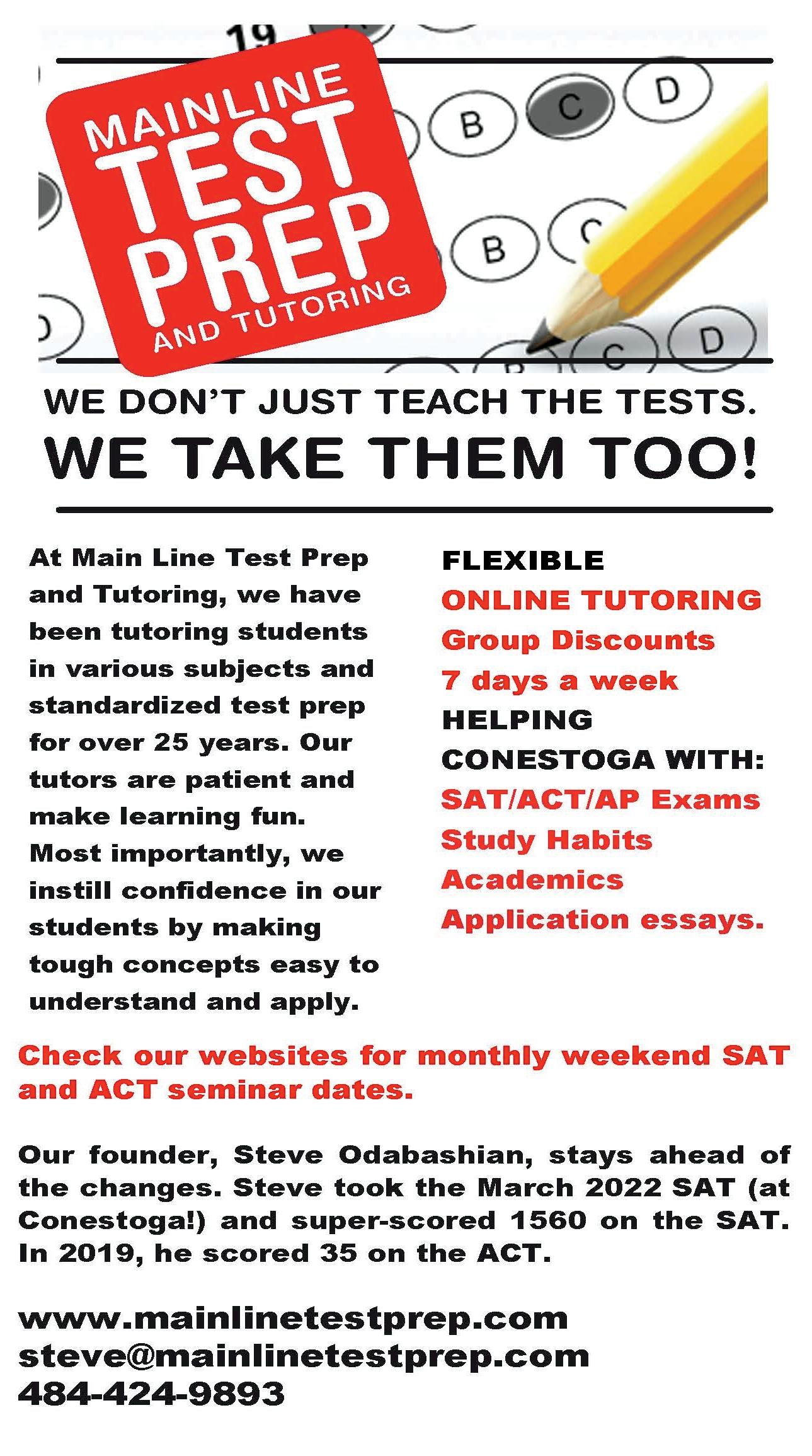
Putting to perfection: Freshman competes at states, ranks nationally Page 10
Girls cross-country places 5th in state championship Page 10
Sophomore creates rst esports team Page 11
NFHS implements wrestling rule changes starting in 2024-25 season Page 11
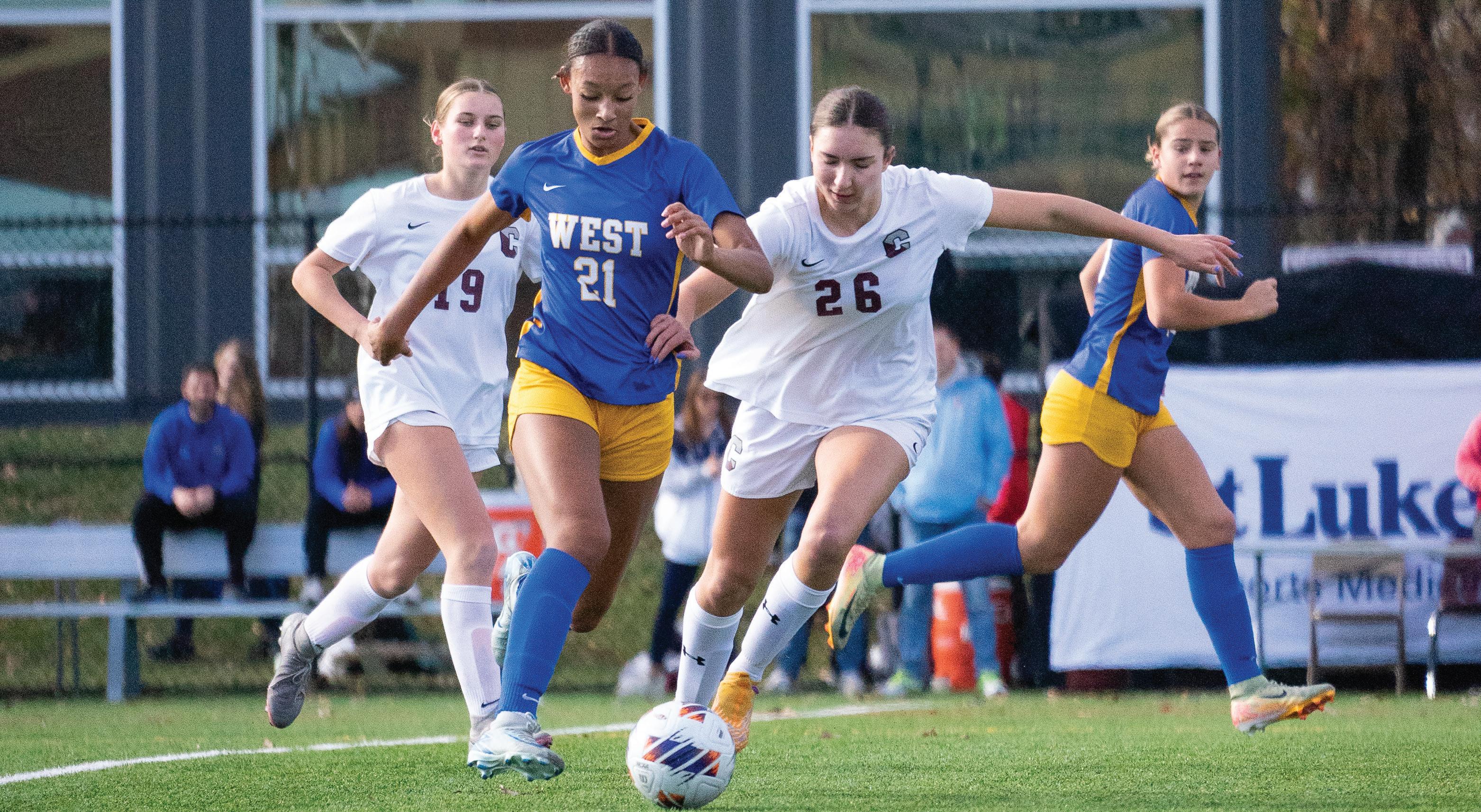
into overtime, where Downingtown West scored a goal and took the win 3-2 against Conestoga.
In a battle for the PIAA 4A State Championship on Nov. 16, the Conestoga girls’ soccer team faced o against Downingtown West High School. From start to nish, both teams showed their determination to win.
Within the rst ve minutes of the match, Downingtown West took an early lead. Conestoga quickly responded, with senior Mackenzie Hogan and junior Kate Kemmerley scoring minutes later, bringing the score to 2-1. Just before hal ime, Downingtown West scored once more to tie the score 2-2. With no goals in the second half, the game moved
“I think what we could have done better is have more o ensive threats. A lot of the time there’s pressure just to score,” Kemmerley said. “When my teammate was dribbling, I needed to be more included in the play. If we had a little bit more of ‘I want to score a goal, let’s go score goals together,’ we de nitely could have had more chances, which could have been more goals, and then we could have won.”
Coming o of a year where seven starters graduated, senior and co-captain Izzy Allred is proud of the e ort that the team has put in to rebuild.
“A lot of underclassmen had to ll in those spots, and they did
a good job,” Allred said. “It was pretty much a whole di erent team than last year, and I’m very impressed that they could come in so quickly and adapt.” is season marks the second year that the team has made it to the state nals. To Allred, this was a constant motivator that helped her stay focused during the season.
“Coming o of the loss last year at state nals, we were all just super hungry to get back there. I think that drove us every single day to work harder in practice,” Allred said.
Head coach Deane Mariotti has always emphasized the need for strategy and a strong mindset. roughout the season, the team juggled multiple games per week and daily practices to
hone their skills and improve their teamwork.
“Mindset is a piece of what we do, but it’s not the majority of what we do. Our practices are a lot more based on improving our gameplay, our tactical work and giving the girls the tools to problem solve in real time during a game so that they can be successful on the eld,” Mariotti said.
Allred believes that the tight bond between players helped the team this year.
“ e team is so close. Everyone is friends with each other. Even if you’re not friends in school, everyone becomes friends from the soccer team because we are with each other 20-plus hours a week at times,”
Allred said. “Everyone’s super close — we get together outside
of soccer. I feel like there’s a lot of friendships made that last outside of the season.”
As the team re ects on its journey to the state nals, Mariotti highlights the year’s signicance, despite the loss.
“ e big thing is that to get to the state nals is a pretty significant accomplishment, and for the girls to do it two years in a row, I think is remarkable. It’s a testament to both their commitment as well as their hard work and their ability to work together as a team. You don’t get to the state nals without those things,” Mariotti said. “I think this group of girls really put in the e ort to create a culture and work ethic to put themselves in position to compete on that last day of the season.”
dedication pay off as they compete, whether they are beginners or seasoned athletes.
e boys’ swim team owes much of its success to coach Mark Tirone, who, a er 30 years of coaching, decided to retire from his position earlier this year.
Tirone began teaching Health and Physical Education at Conestoga in 1994. He also started coaching cross-country, boys swim, spring track and later, tennis. After swimming in high school and at West Chester University, Tirone felt inspired to create his own club, Westtown Aquatics, where he spent seven years coaching.
“I am passionate about the sport and getting students interested in the sport,” Tirone said. Tirone’s favorite moments of coaching come from seeing his swimmers progress in their athletic careers. He enjoys witnessing their hard work and
“It’s a combination of things. Seeing the novice swimmers progress and reach the Central League Championship meet at the end of the year and the elite swimmers doing well at districts and qualifying for states is (my favorite),” Tirone said.
Known for his positive and encouraging coaching style, Tirone always pushed his swimmers to complete difficult workouts and fast-paced sets. According to senior swimmer Hutch Wood, Tirone would make swimming for Conestoga as enjoyable as possible.
“Something I liked about him is that he wouldn’t just watch us swim. He would encourage us to swim faster,” Wood said. “He would tell us to pick up the pace and he’d always cheer us on as we’re swimming.” Although the swim team members will miss Tirone, the
swimmers are excited for the new coach, Jared Messics, to bring a new perspective to the team. Having worked with the Upper Main Line YMCA’s swim club since October 2021, Messics was already familiar with many of the swimmers in the area when he began coaching.
“I have heard all positive stuff about him, so I am really looking forward to what he has to bring,” Wood said. “I think he is going to be a great replacement for Mr. Tirone.”
According to the swimmers, they will still talk about Tirone frequently and he will be used as motivation during their season. He will also be commemorated in the team’s spirit day where the swimmers dress up as Tirone.
“His legacy will always be in the ’Stoga swim team, and he’ll show up to some of the meets too,” Wood said. “Hopefully, if we ever get a pool, I would definitely name it after Mr. Tirone.”
